Over the Sierra Madre.
All good things must come to an end, sometime. After six weeks of cycling the length of the Baja Peninsula – through one of the most unique places we have ever experienced – we ran out of road and it was time to move on to ‘mainland’ Mexico via ferry. We left Baja with zero regrets. The Baja Divide had delivered everything we had hoped for: new landscapes, challenging and engaging riding and its own unique culture and people – everything we look for on a cycle tour.
Since entering the USA from Canada we’d been following well documented routes: The Great Divide (USA via the Continental Divide & Rockies) and the recently published Baja Divide route. From here on through Mexico we’d be cobbling together a route of our own imagination and desire – using a mixture of information gleaned from others cyclist’s blogs and our own research. We kicked off with a ride straight over Mexico’s western backbone: the Sierra Madre Occidental – up onto the arid altiplano surrounding Durango.
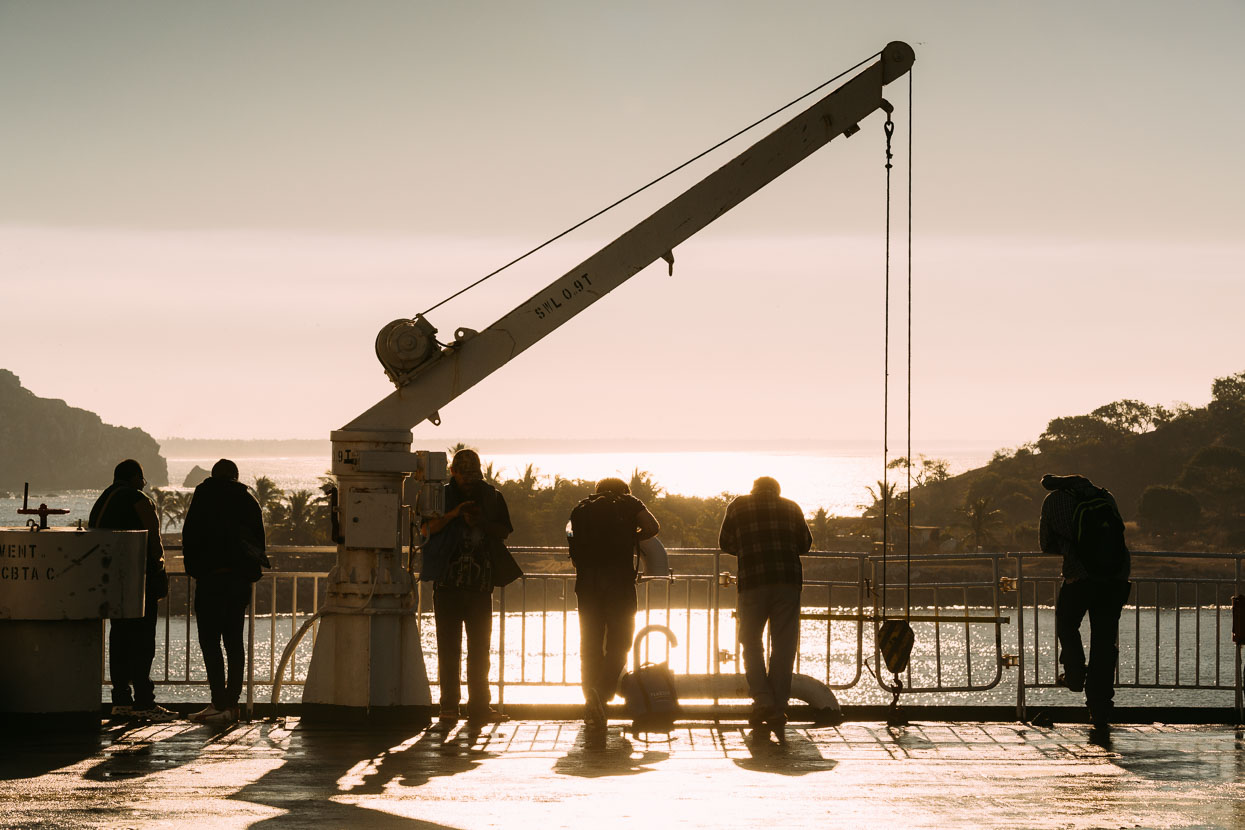
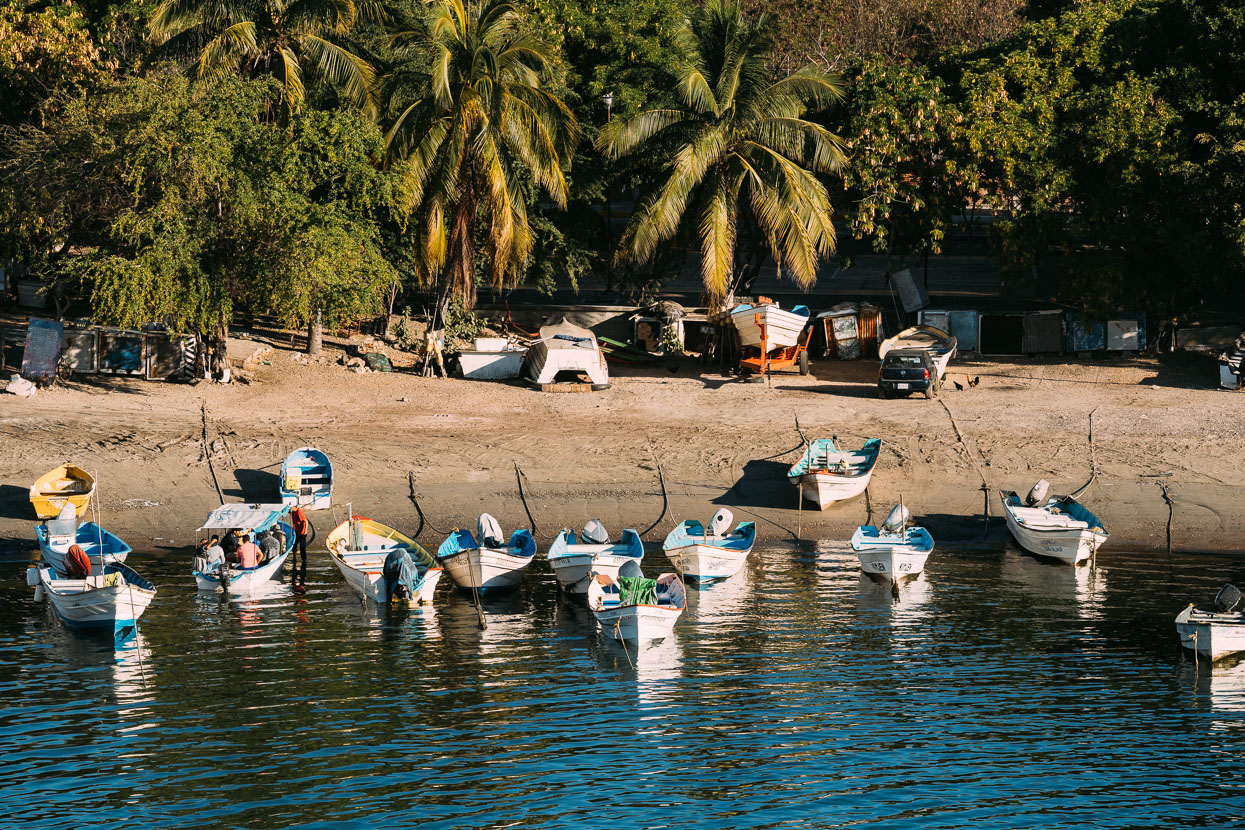
After a 500 kilometre overnight ferry crossing (pretty much due east) from La Paz to Mazatlan, the first thing that struck us was the change of climate. While La Paz and Mazatlan are almost on the same latitude – just below the Tropic of Cancer – Baja’s narrow peninsula surrounded by cool ocean is more hot and dry than humid. Mazatlan is the latter. Gone was the dry-as-a-bone landscape, replaced by hot days, warm nights and a verdancy and lushness that made a welcome change.
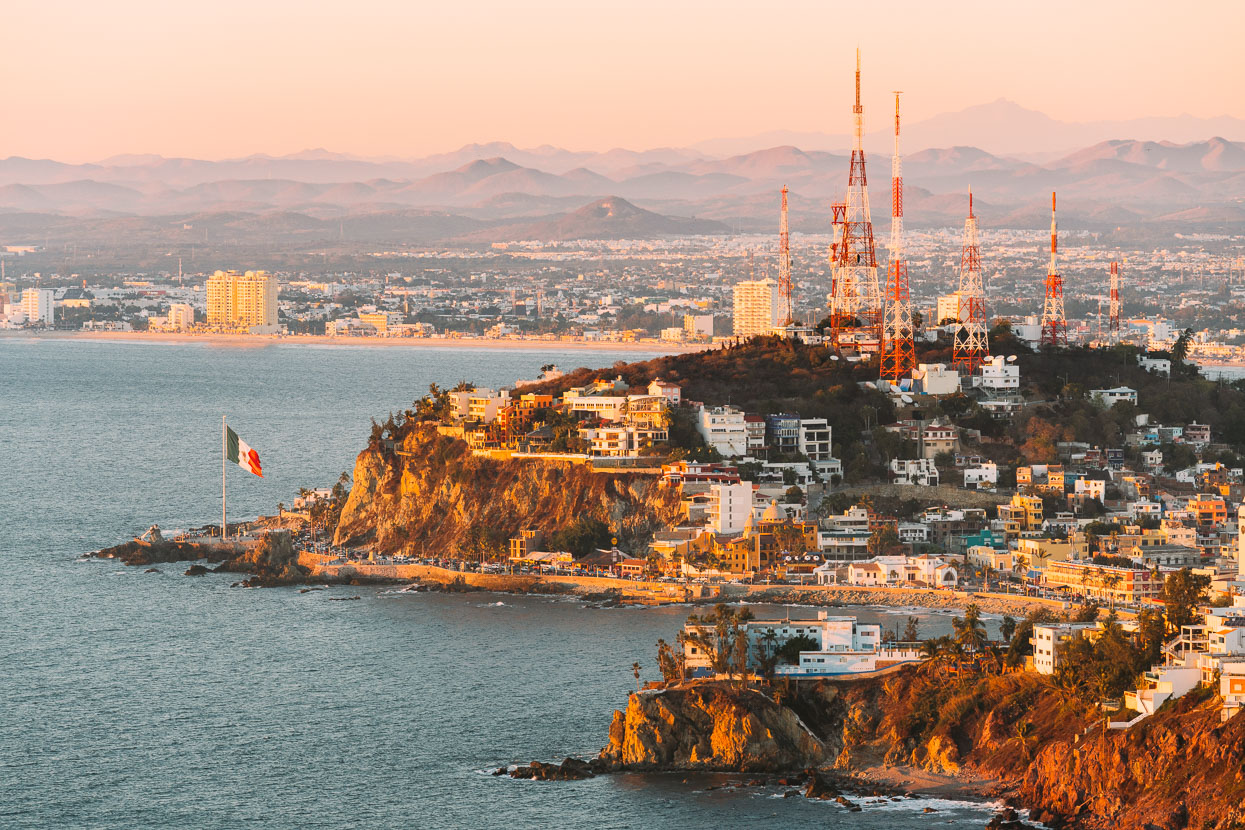
The view from El Faro – a popular hike up a hill on a narrow neck of land that juts into the ocean. Beyond lies the foothills of the Sierra Madre – a spectacularly broad, high and folded range, as we’d soon discover.
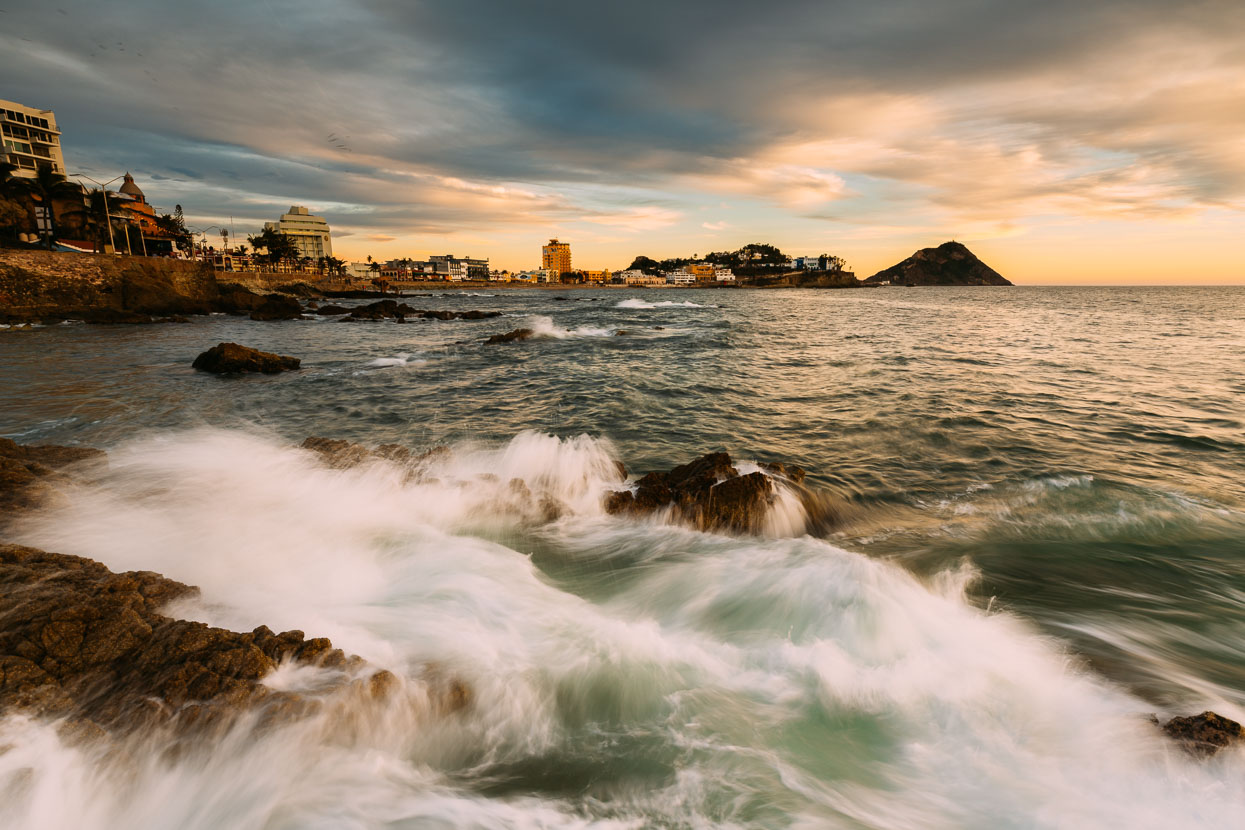
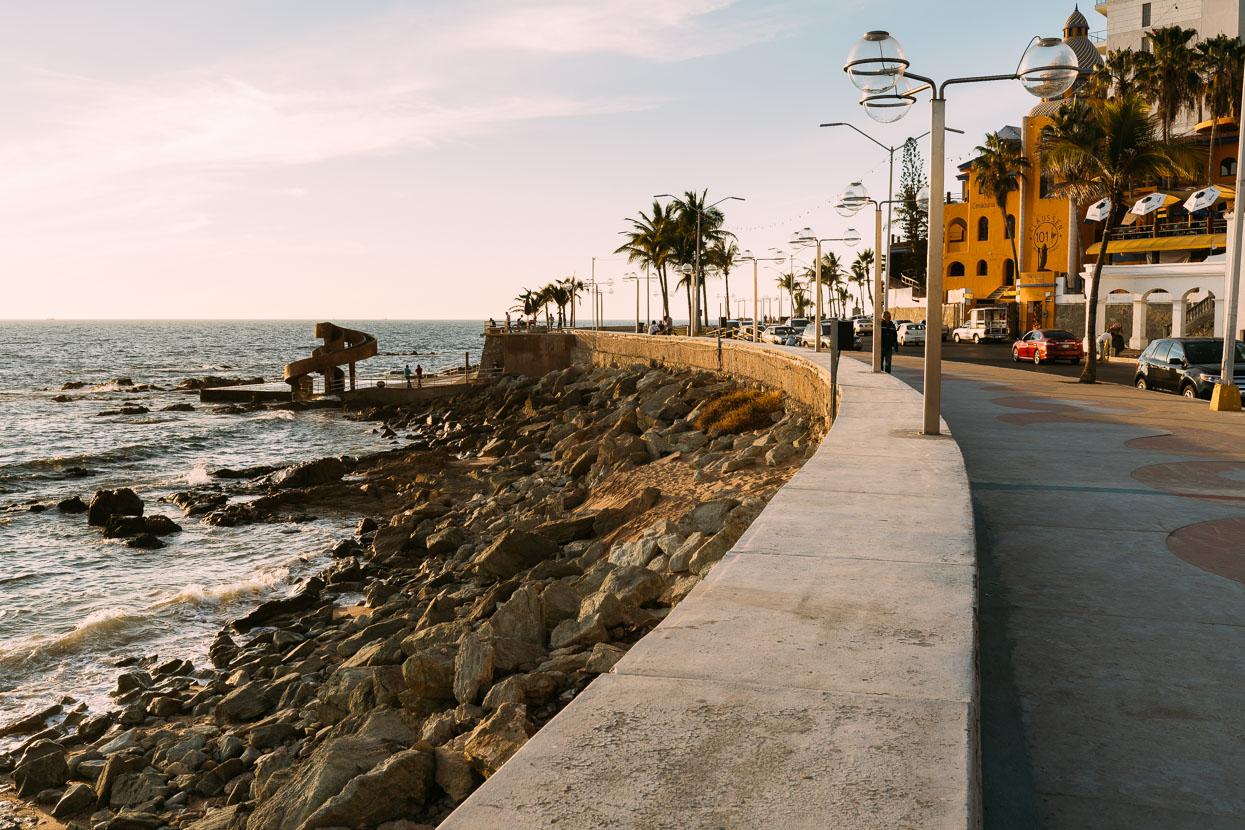
Mazatlan’s malecon is where it all happens in the evening and weekends: locals and tourists alike mingle and wander to watch the sunset and cliff divers and eat street food.
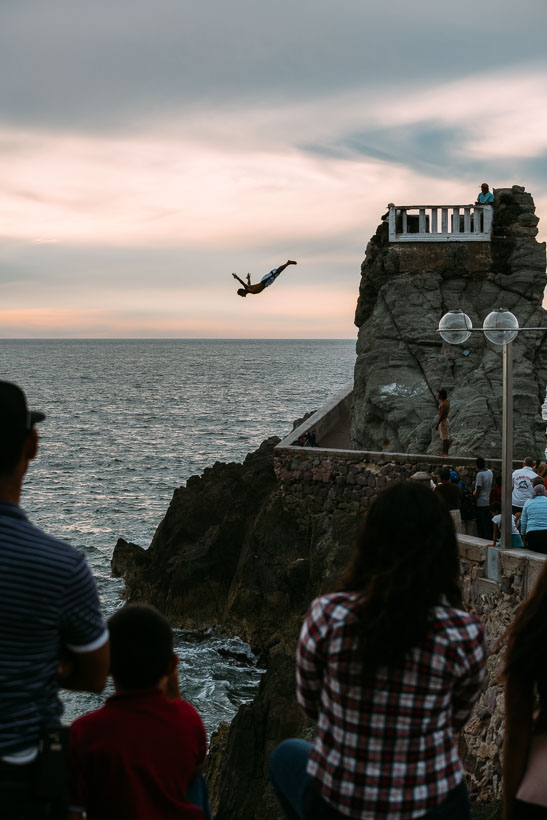
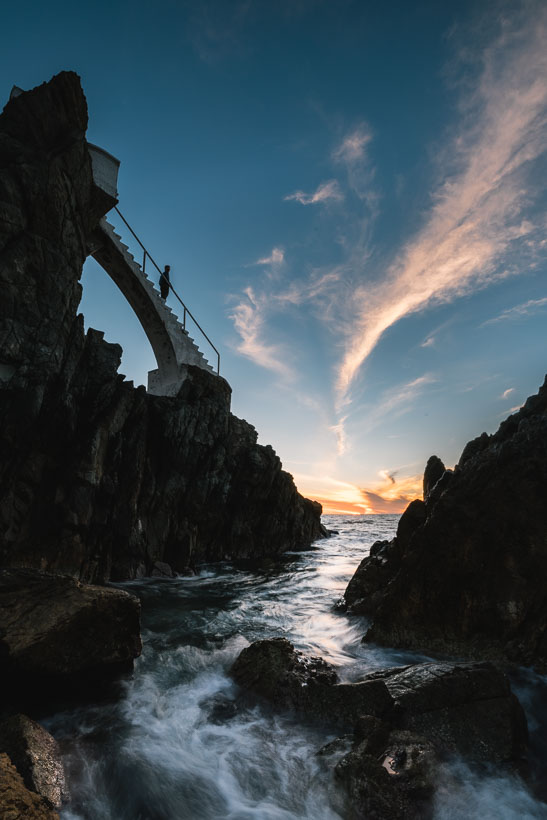
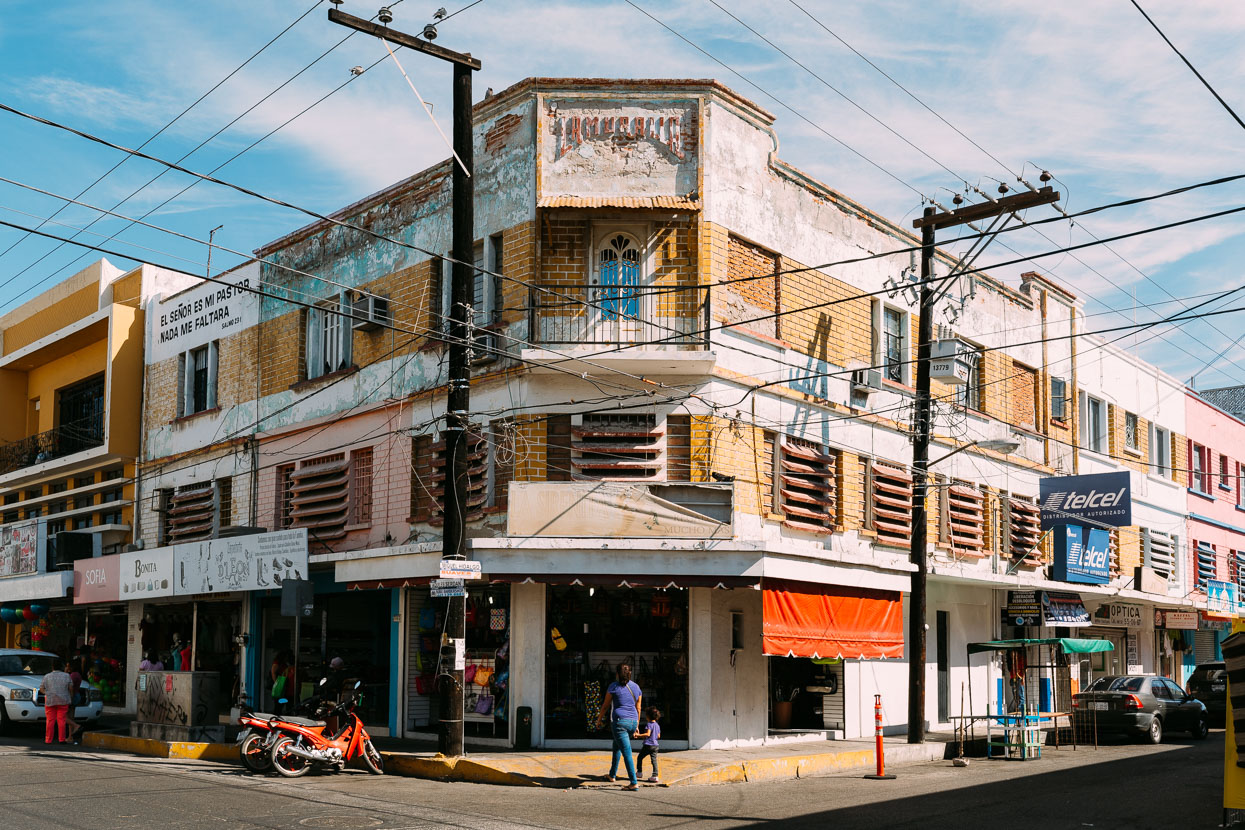
A typical street in downtown Mazatlan. Might not look much, but never too far away are the many plazas that are central to life in Mexico. Places to hang out and play cards by day under the shade of trees, and at night often busy with music, dining and socialising.
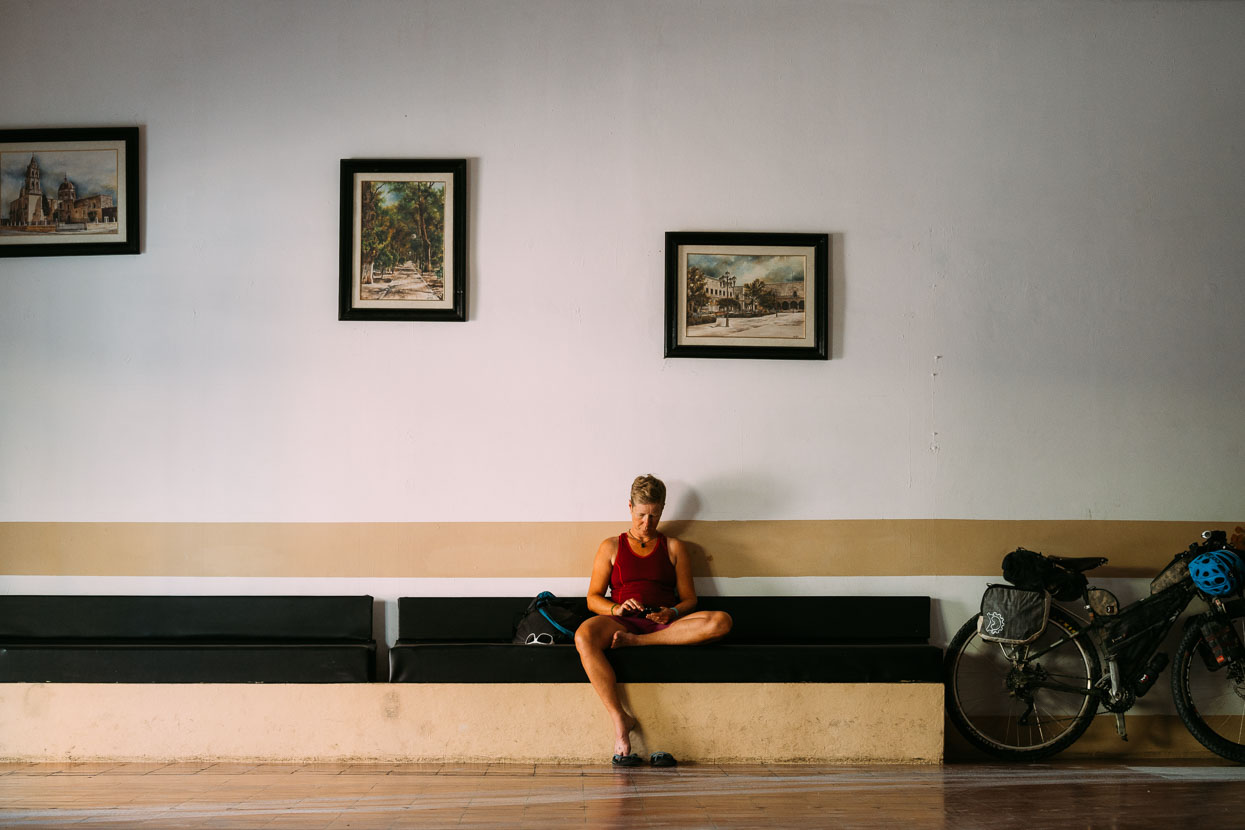
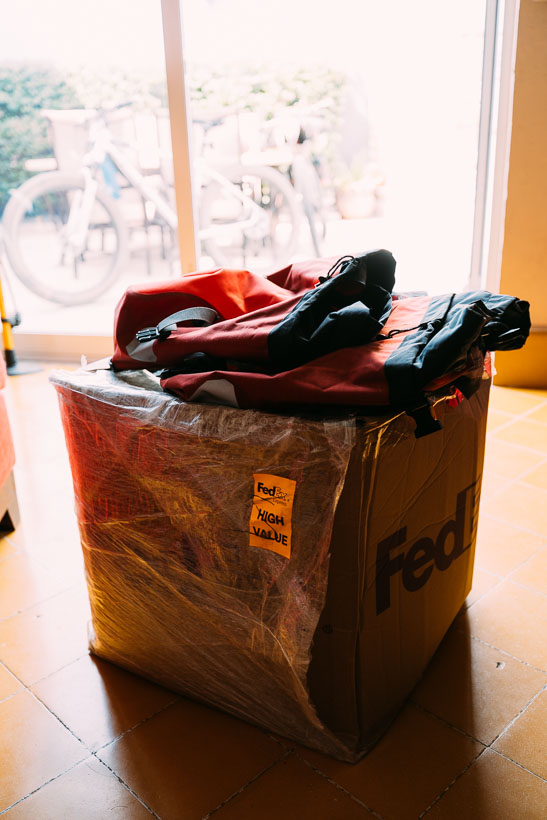
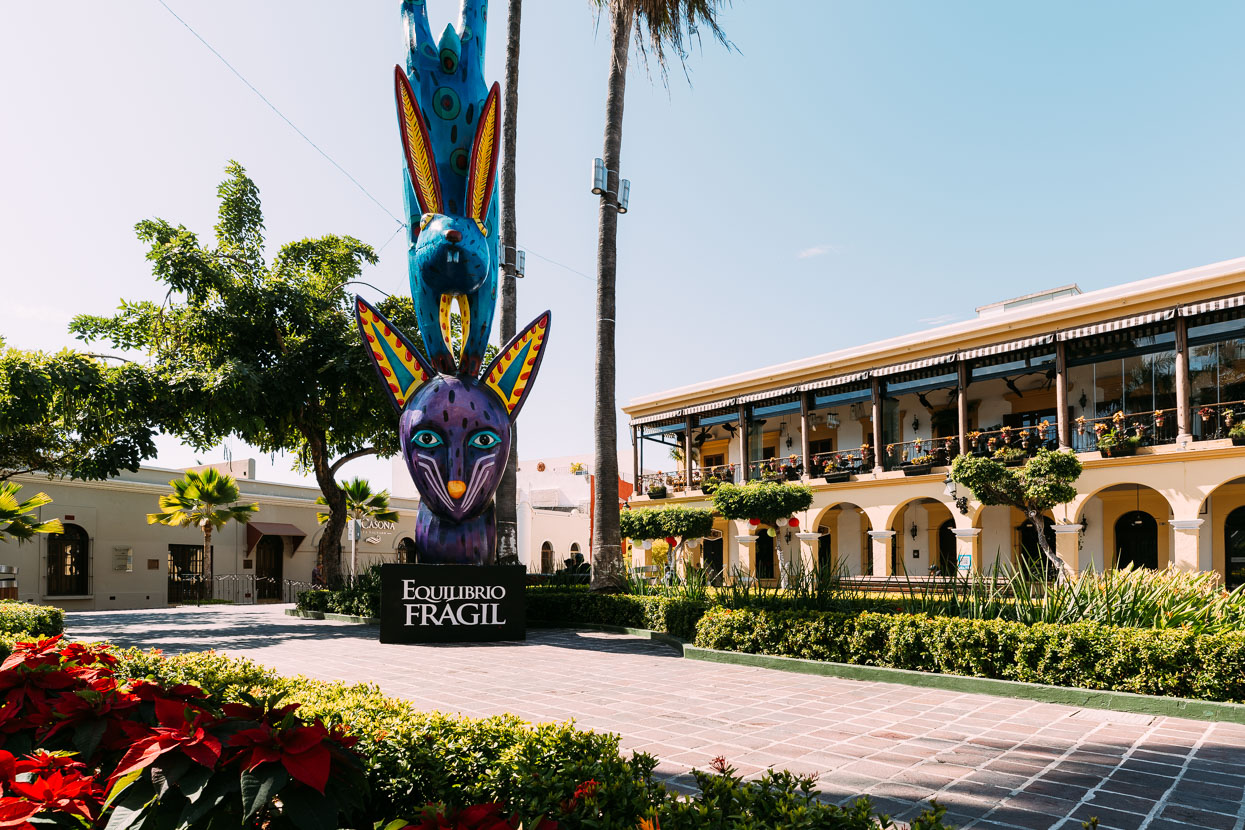
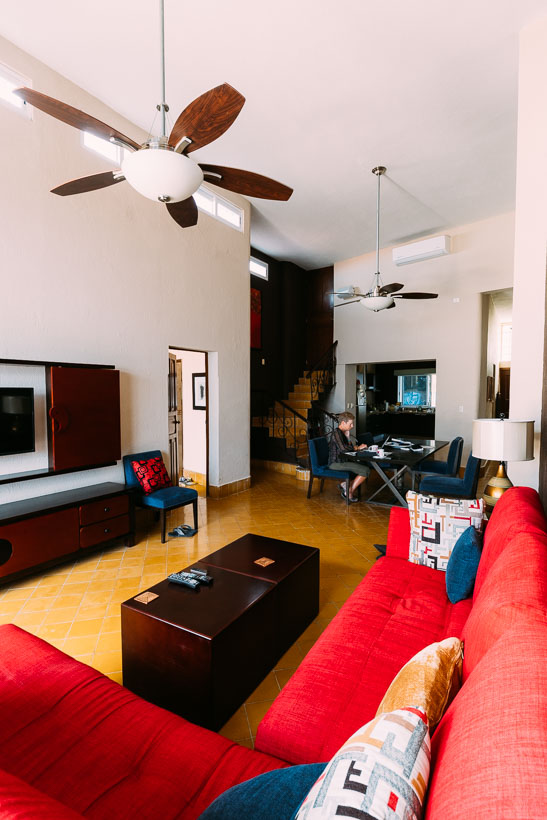
While we spent most of our week in Mazatlan in a hostel, we were lucky to be able to stay with some great Warmshowers hosts for a couple of nights. Chris and Fred were great company and generously made sure we were well fed during our time there. Our 23 kilogram box of kit that we’d send down from Tijuana was waiting for us at their house: spare tyres, laptop, panniers, stove, pot, winter gear and other odds and end. Some of this stuff we have taken with us and the rest has gone into two parcels: spare tyres to San Cristobal de las Casas, Chiapas and our winter weight sleeping bags, down jackets, gloves and leggings to Huaraz, Peru. It’s after there that we will have our most prolonged stretch of mountain riding and highest passes of the trip, coupled with a cooler climate.
We have sent parcels via FedEx, which is very cheap within Mexico, hence the day trip we made from San Diego to Tijuana to send our Mazatlan parcel (US$25 versus US$250 + duty if sent from San Diego).
After a week in Mazatlan waiting for my new wheel (see end of previous post) to arrive, we could finally hit the road. The most traffic-free egress from the city proved to be via a short ferry crossing over to a very quiet road down a 10-kilometre long sand spit, past the airport and onto the coastal highway. We then followed the cuota (toll road) to Concordia, as the libre (old road) as far as there can be very busy and has no shoulder.
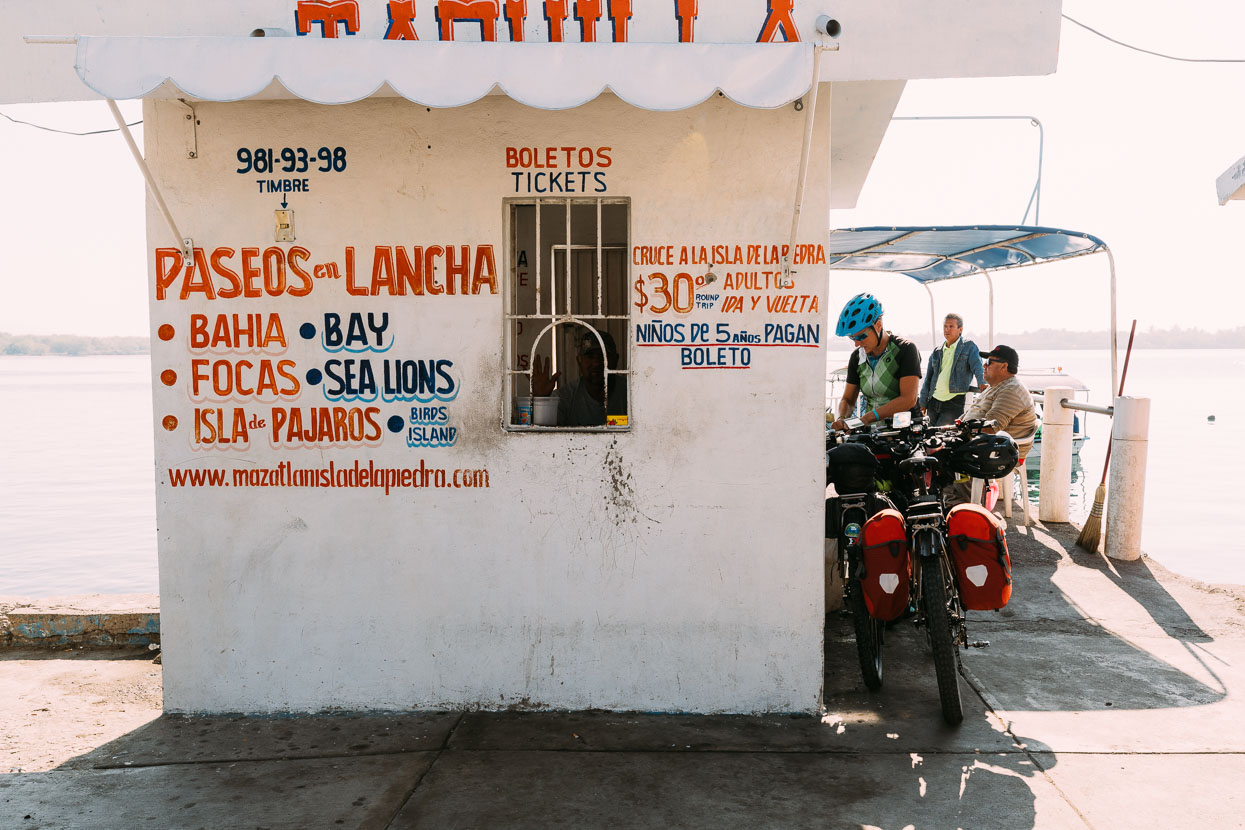
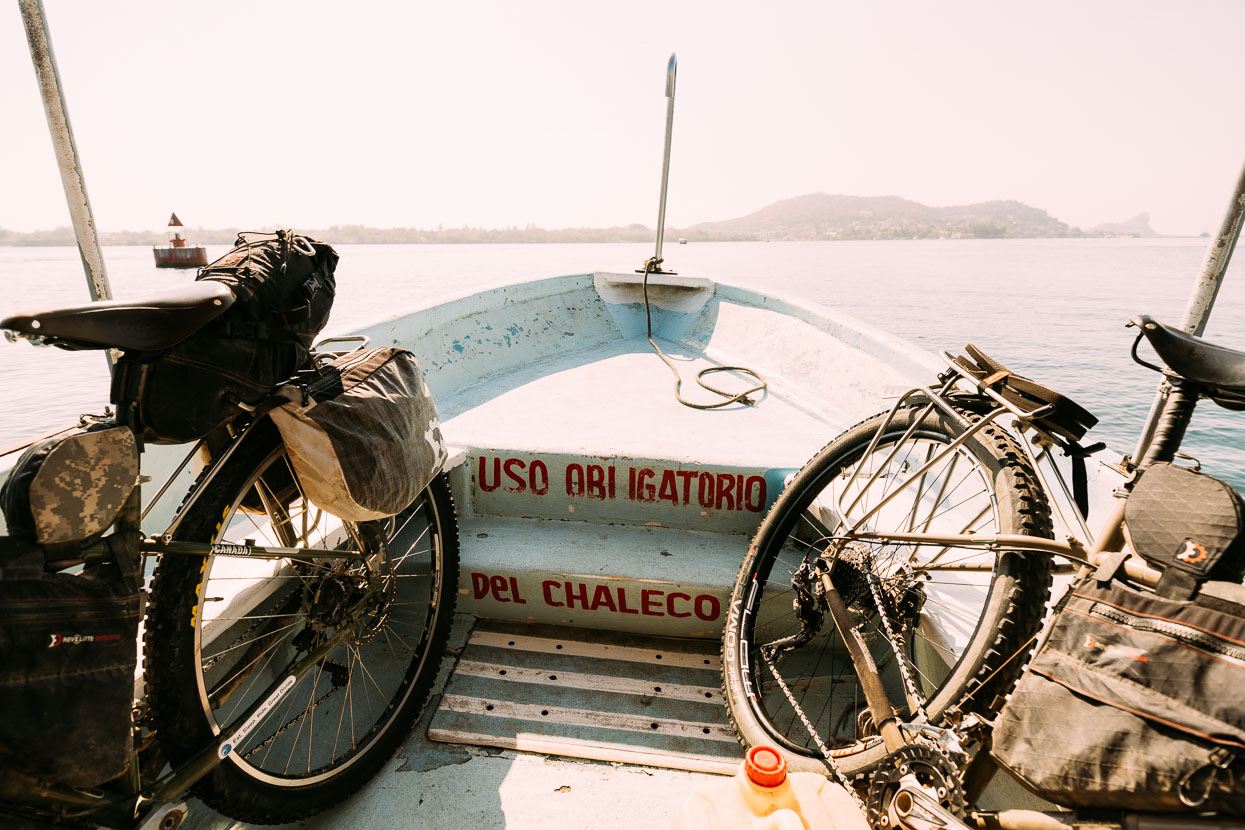
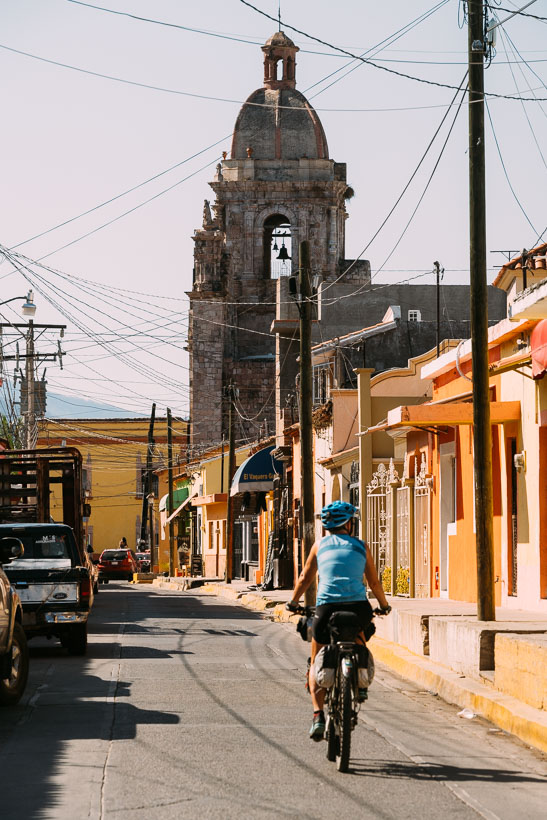
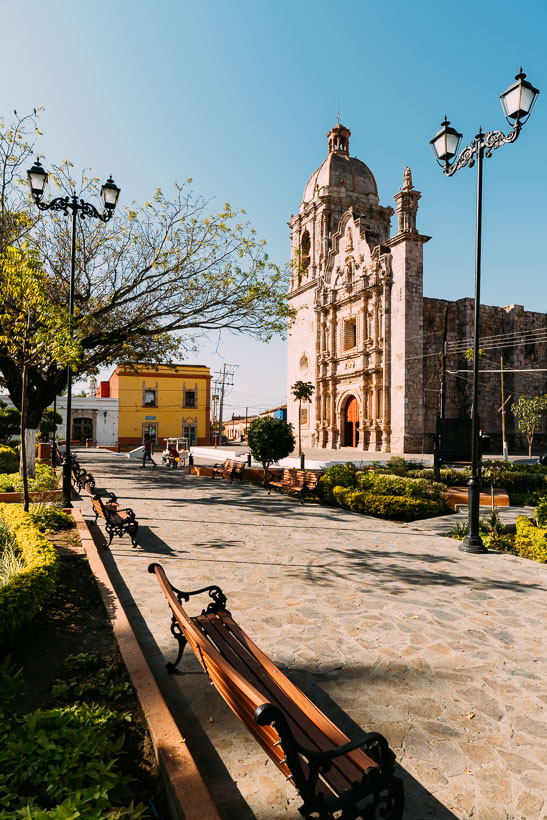
We rolled into Concordia in the mid afternoon in 30° degree heat and rested in the plaza for a while before pushing onto Copala. The foothills of the Sierra Madre, away from the airflow of the coast, proved to be the hottest terrain of the trip so far.
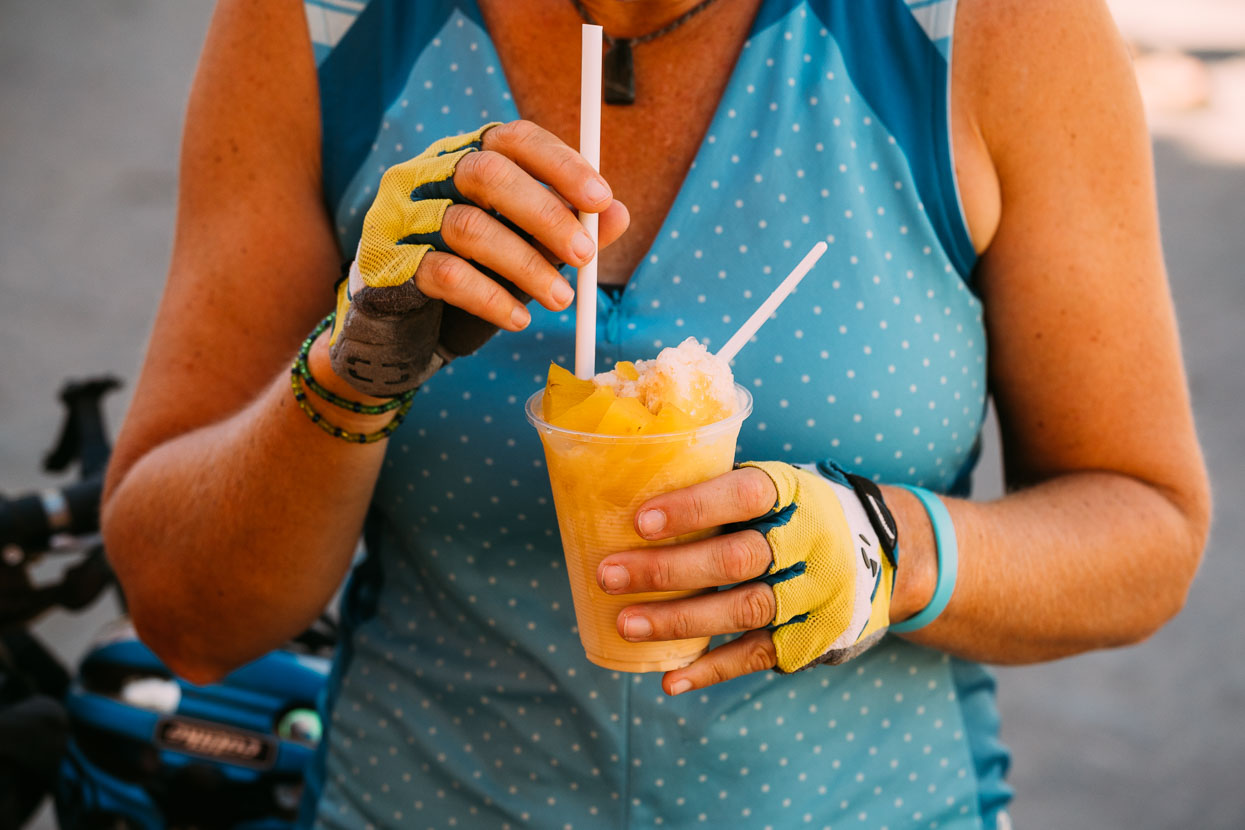
From the quaint town of Concordia the route into the Sierra Madre begins climbing properly. The route we were intending to follow has long been a crucial link between the coast and the wealthy mining cities of the central high country. It takes a pretty much direct line east straight over the ranges, reaching elevations of 2700 metres as it climbs to the high plain. Collectively, we were looking at over 6000 metres of altitude gain over the five-day ride from the coast to Durango, thanks to the tortuously formed mountains of the sierra.
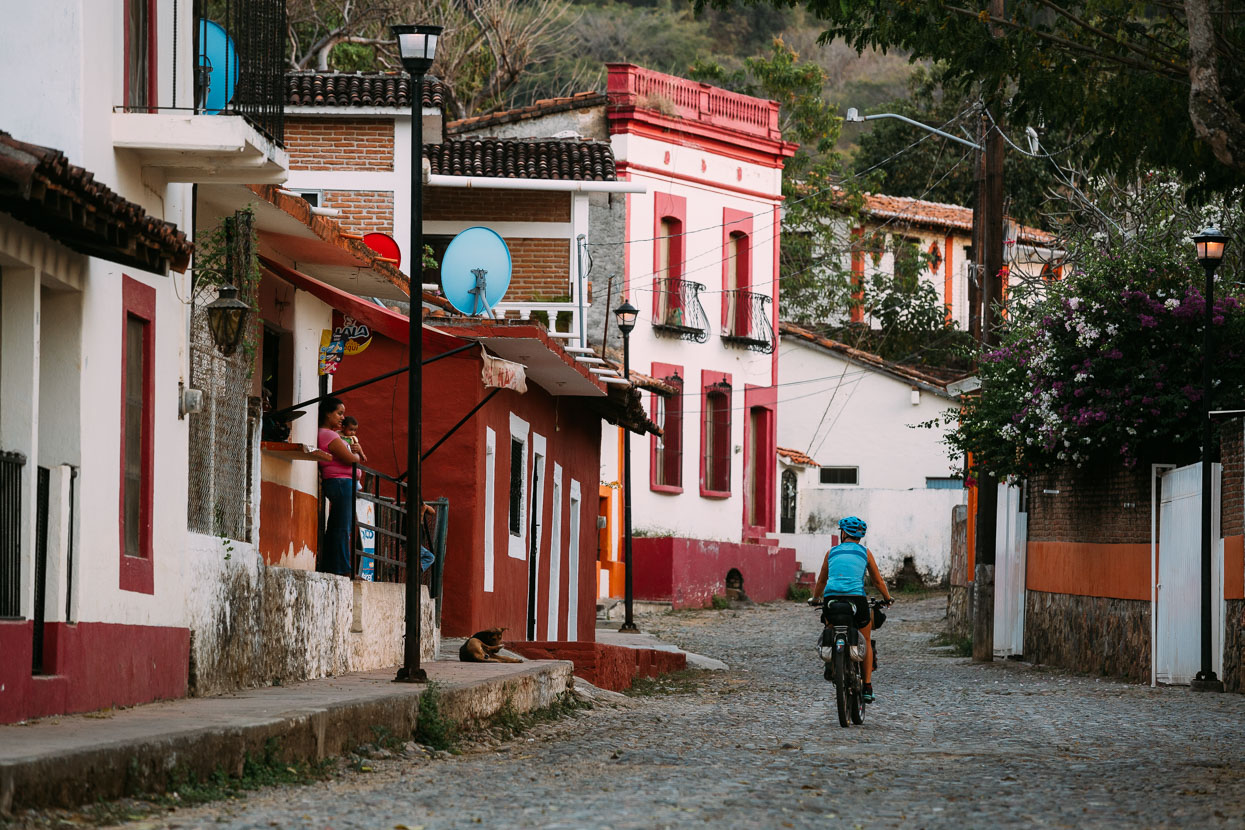
Only 500 metres higher than Concordia, Copala is an ancient Spanish silver mining town and was where we stayed the first night out of Mazatlan. A single small restaurant in the village provided us a meal and was only open due to there also being a group of twitchers (bird watchers) also enjoying the amazing biodiversity of this area.
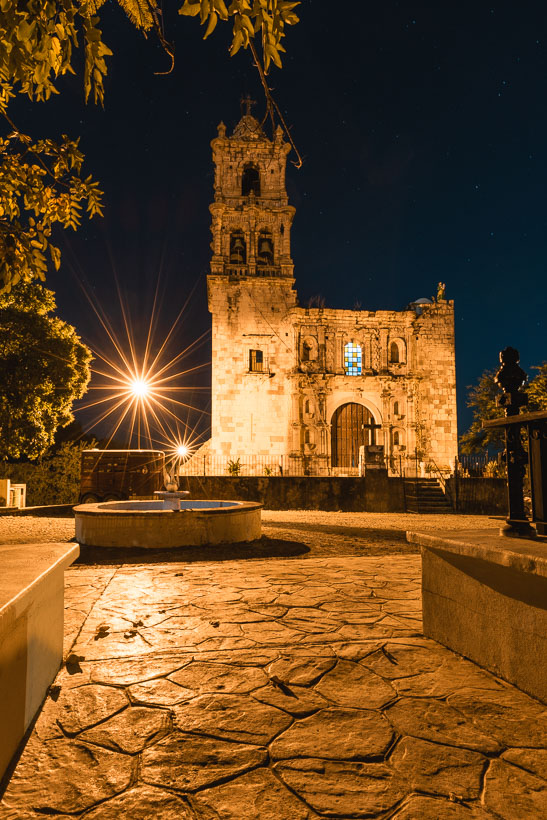
Another amazing and very old church, and as with most Mexican towns and villages, it’s around the church that life revolves – with it usually the centrepiece of the town square.
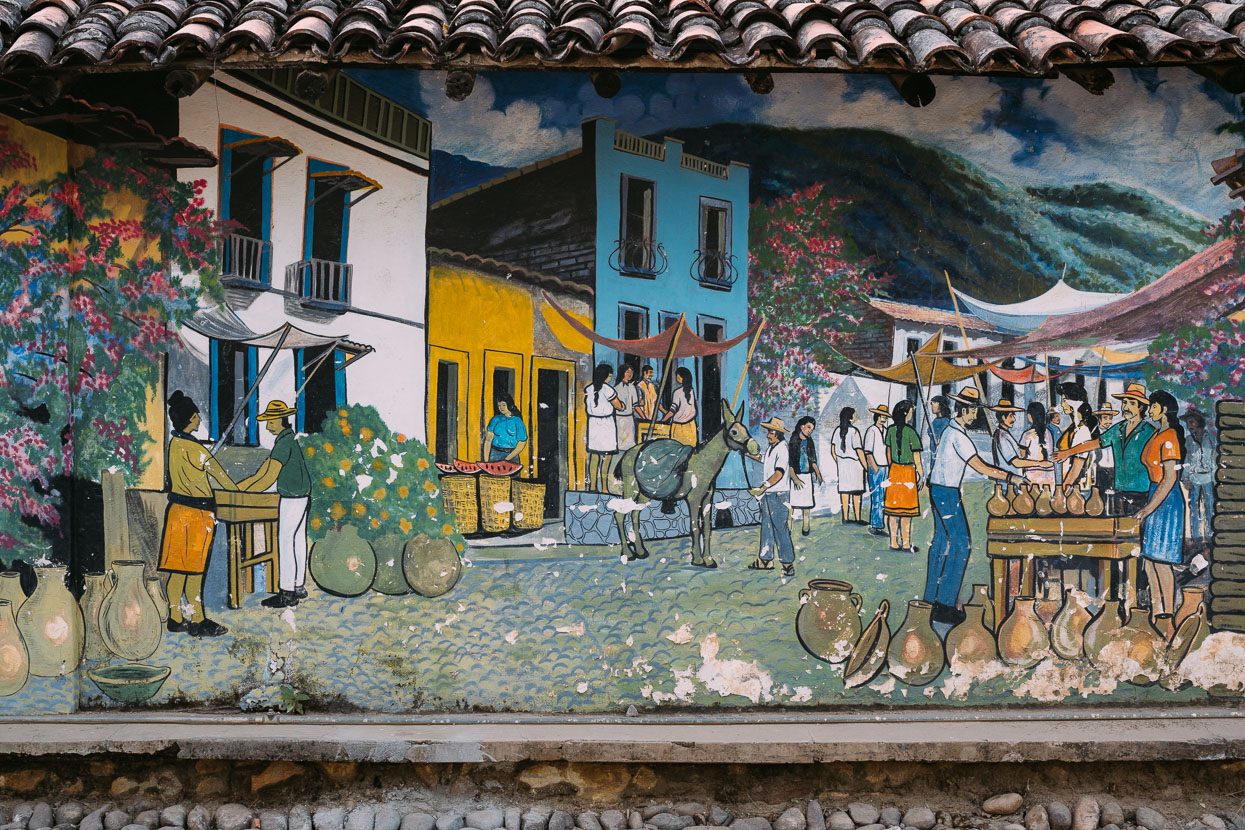
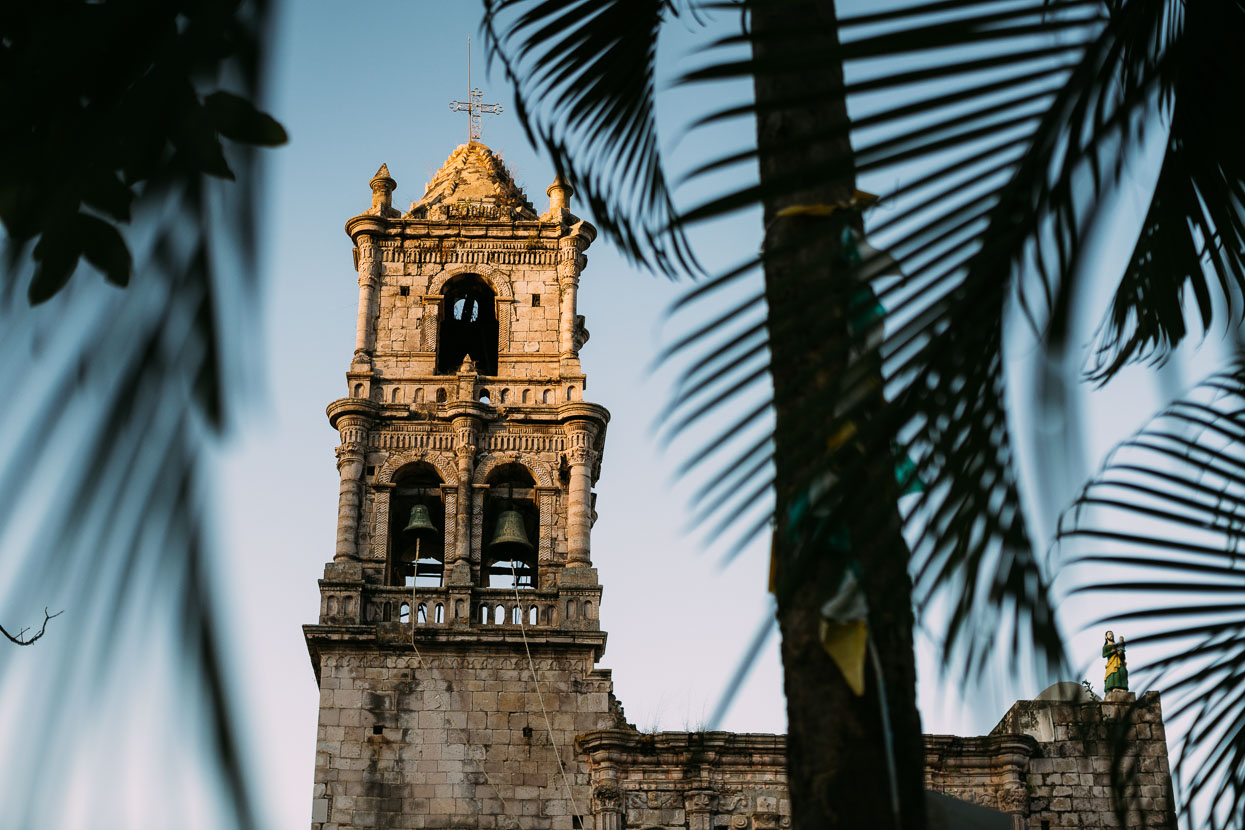
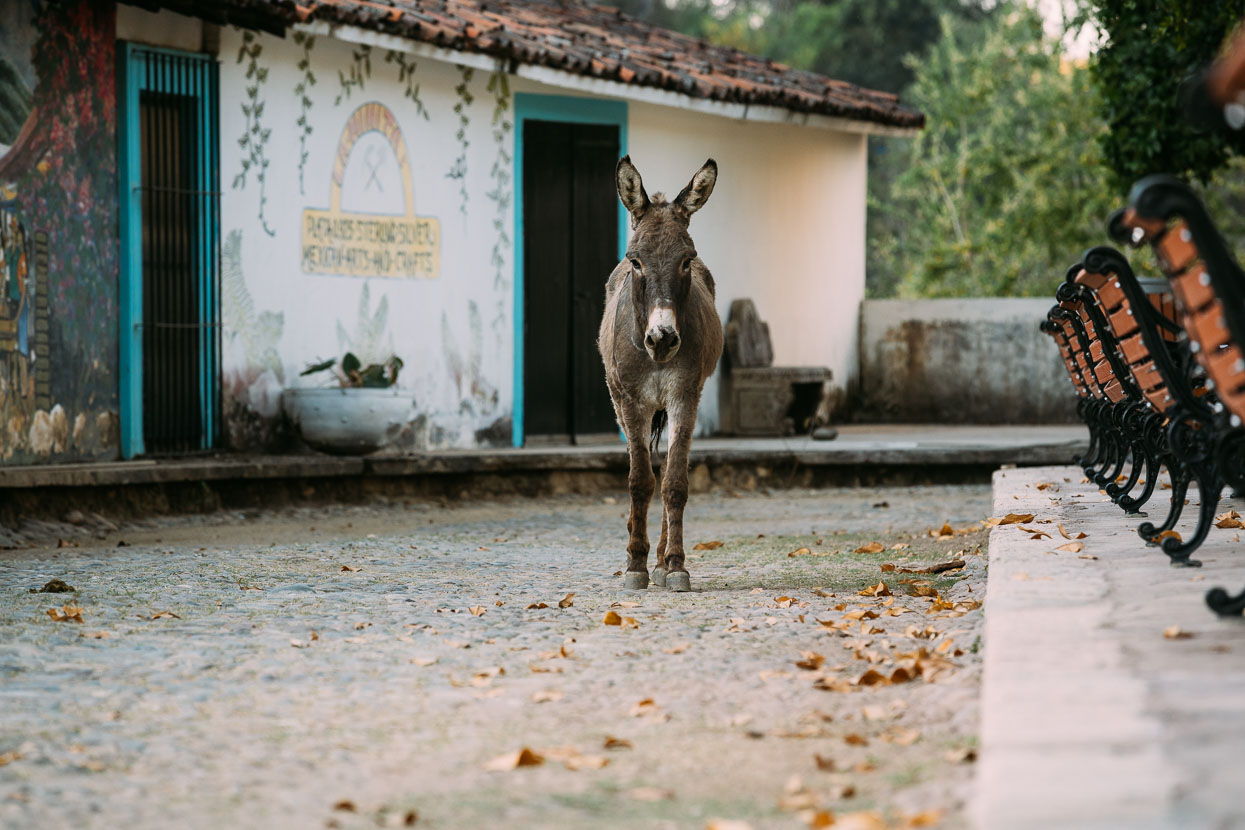
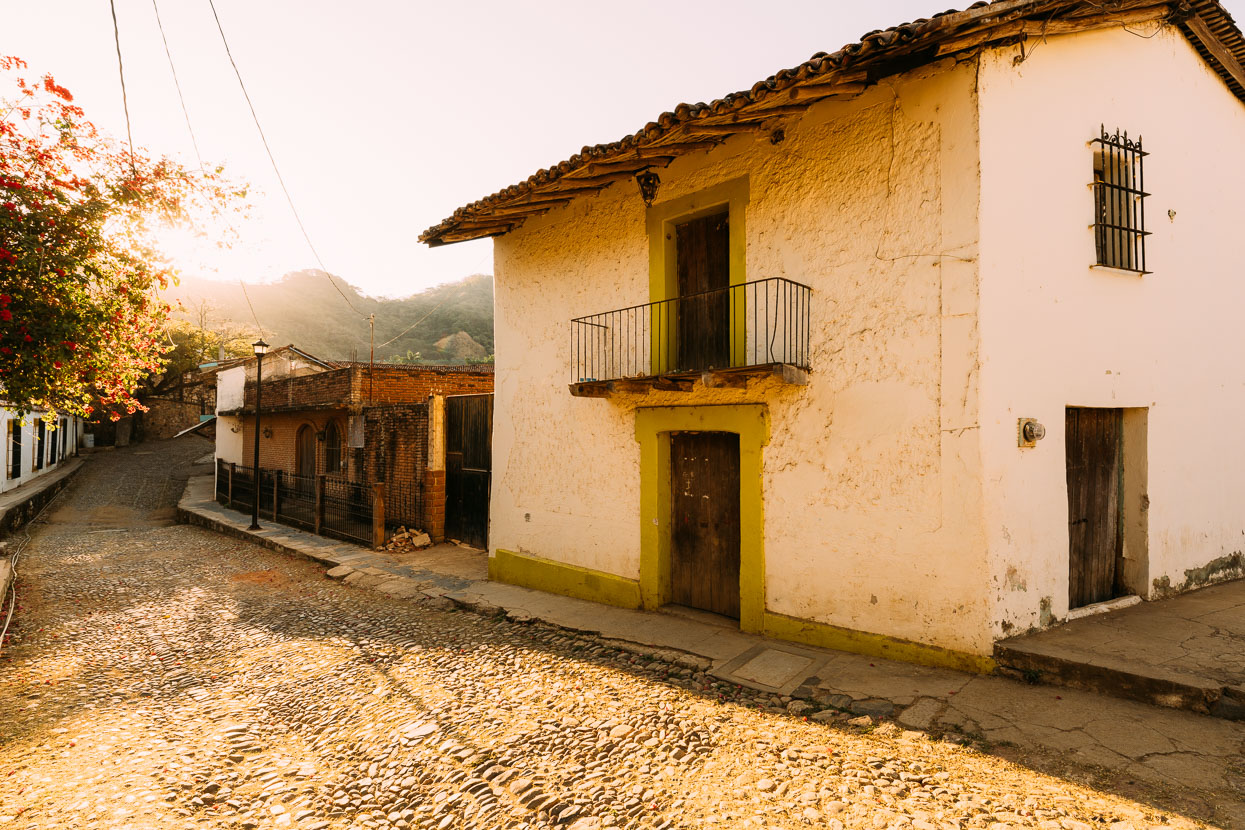
Copala was the best of surprises – a cute and tranquil village, tucked out of sight of the highway
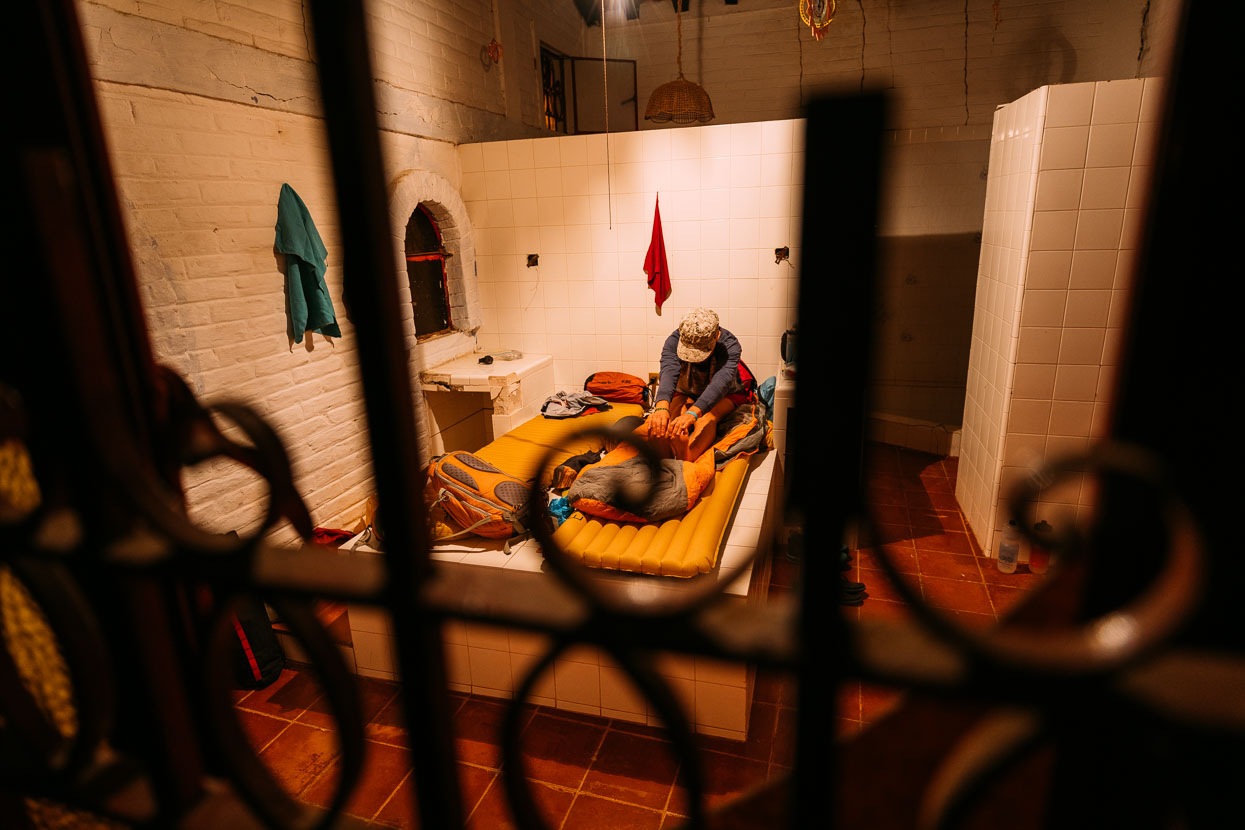
While in the restaurant we asked about somewhere to stay in the village, only to have the owner offer us his ‘spare’ house. A young guy with a family, this fellow also turned out be the town’s priest, who we’d overheard giving a vociferous sermon in the church as we rode into the village. He was also a very talented artist, with an impressive gallery of handmade masks that he proudly showed me.
The house he gave us was temporarily unoccupied, unfurnished and overdue for some maintenance but it was a comfortable place to spend the night, right in the village.
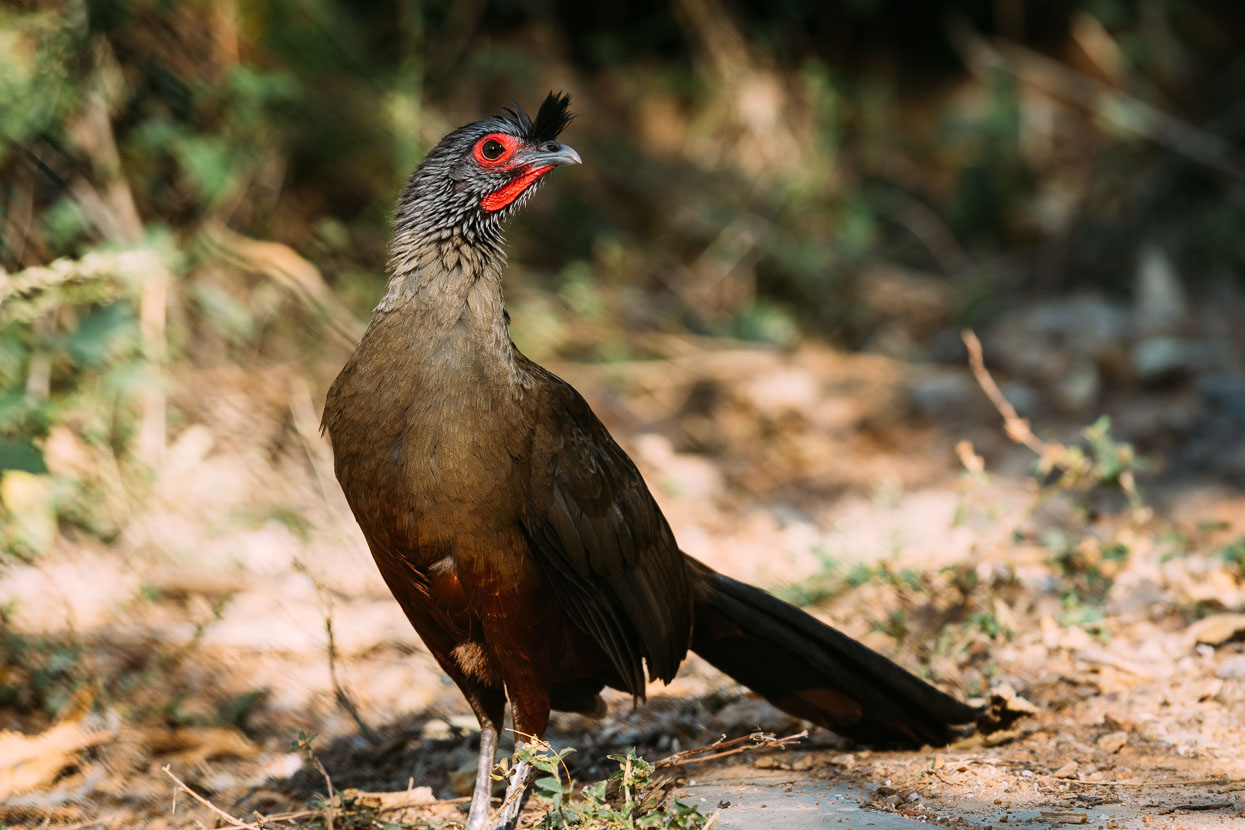
We had an interesting encounter with the onomatapoeically-named chachalaca, a chicken sized bird, known for both its fiercely territorial behaviour and its tendency to follow humans around. This one got very noisy and worked up when we got close, and then flew onto my head for a moment, down to the ground and then back up onto Hana’s bike. At that point we thought it was best left alone and took the regular road back out of the village.
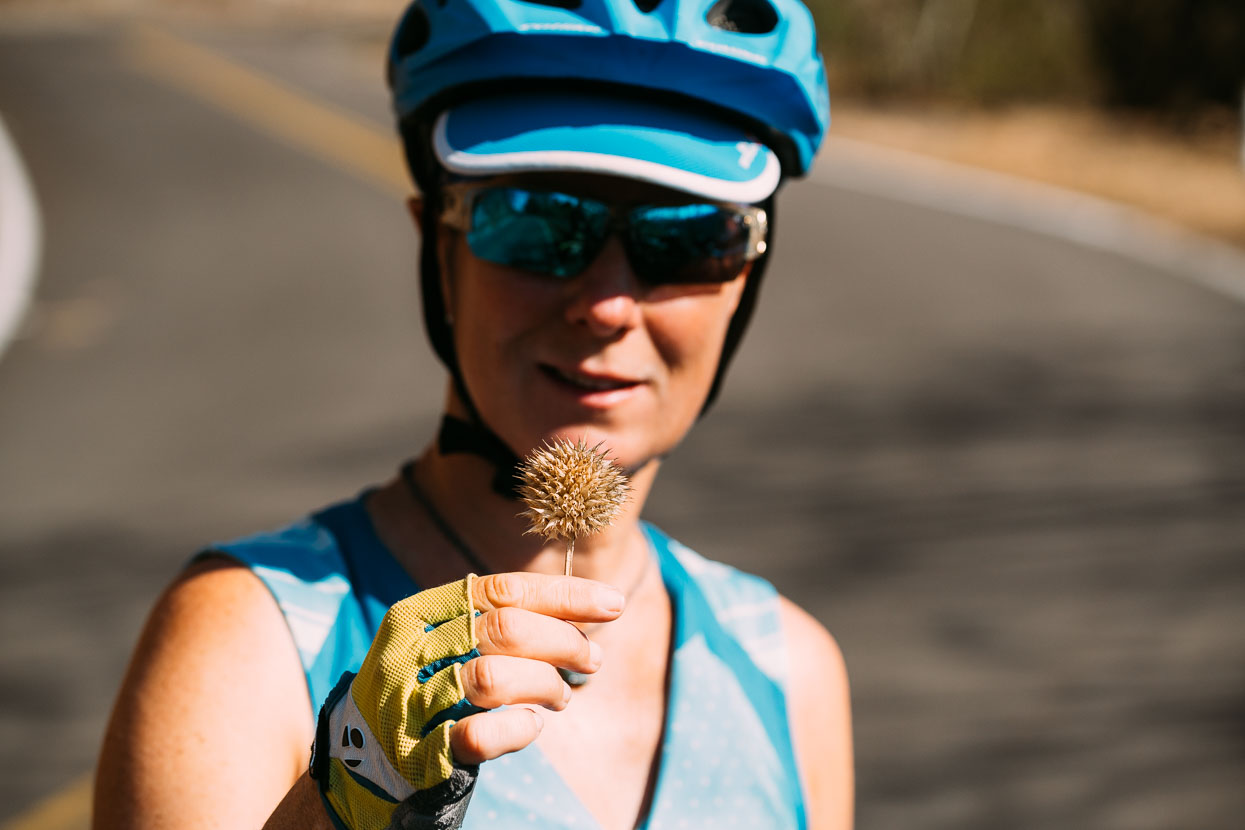
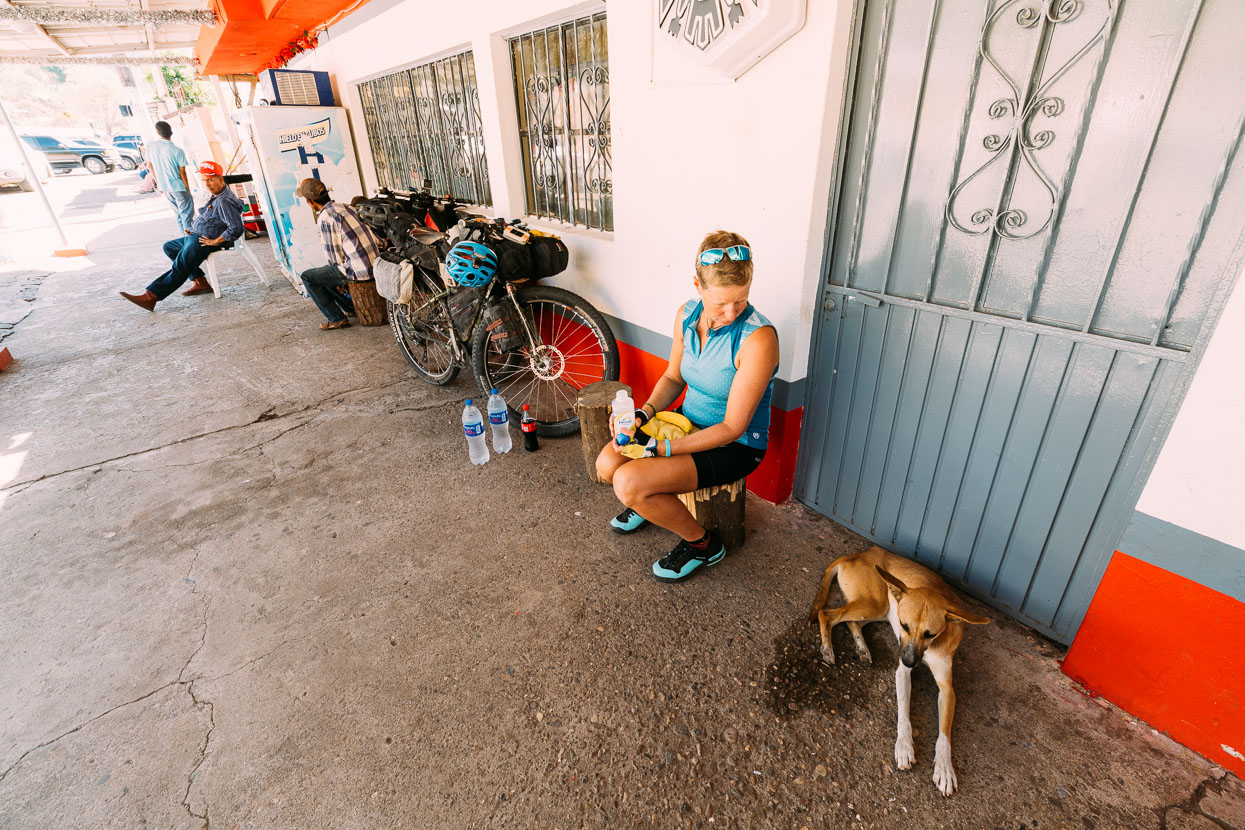
The next day we climbed for over 2000 metres, leaving the lush semi-tropical environs of Copala behind and climbing higher into the Sierra Madre, right into the high elevation ‘cloud forest’ as it’s called and replacing the palm trees and bamboo with pines and other species.
It was a Sunday, which in small villages in Mexico tends to mean a profusion of borrachos (drunks) and people loitering around the main street. In one such village a dog (the one to Hana’s right) began to follow us in the baking heat of the early afternoon and ended up trotting alongside us for 15 kilometres! In the end we distracted it with a few tortillas and took off down a long descent to drop it – a bit sad seeing as she had such a great character and was good company.
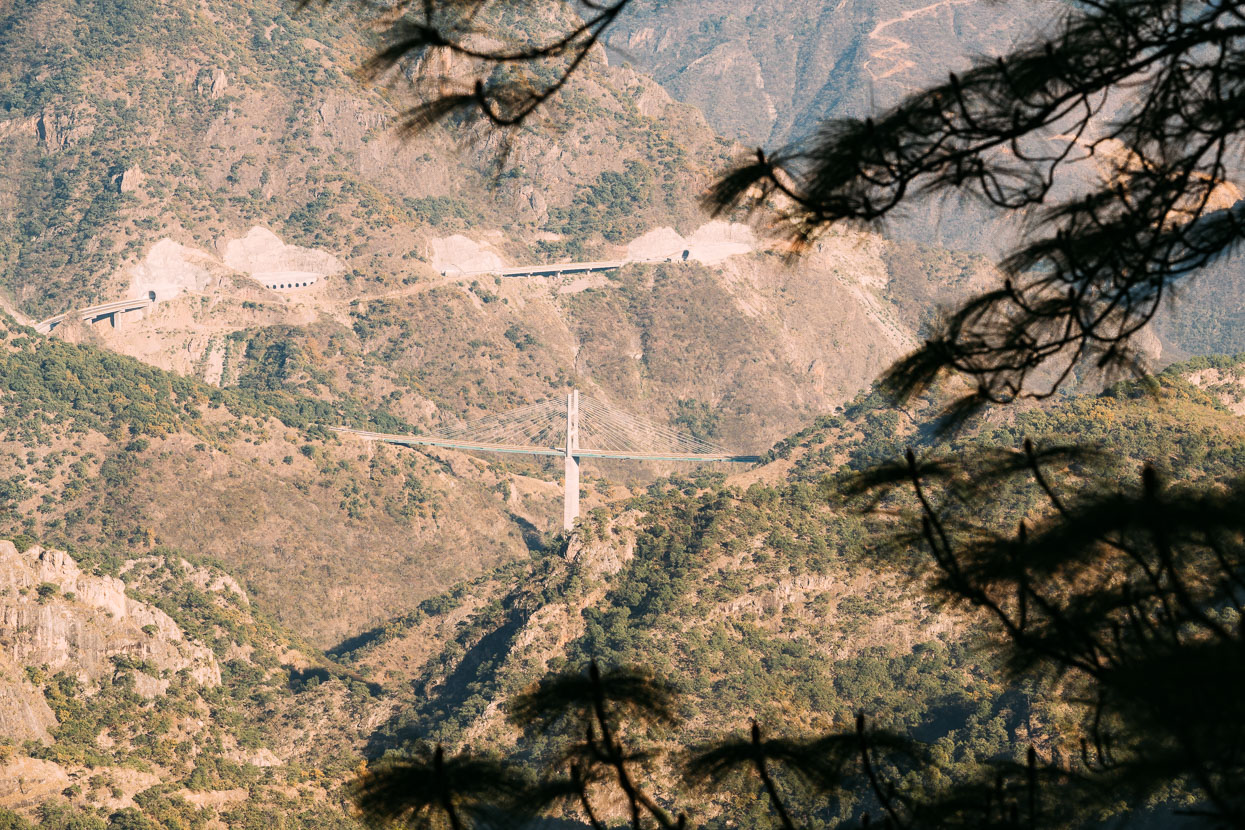
The old highway we were following deeper into the mountains is known as the Espinazo del Diablo – the Spine of the Devil. In recent years a modern toll road has replaced it. Where the Espinazo follows the contours of the land and weaves deftly along narrow ledges and ridges and through small saddles, the toll road simply bores through it – utilising tunnels and amazing bridges for a more fuel efficient and faster passage for this crucial link. In several places we could see the modern road in the valleys beneath us.
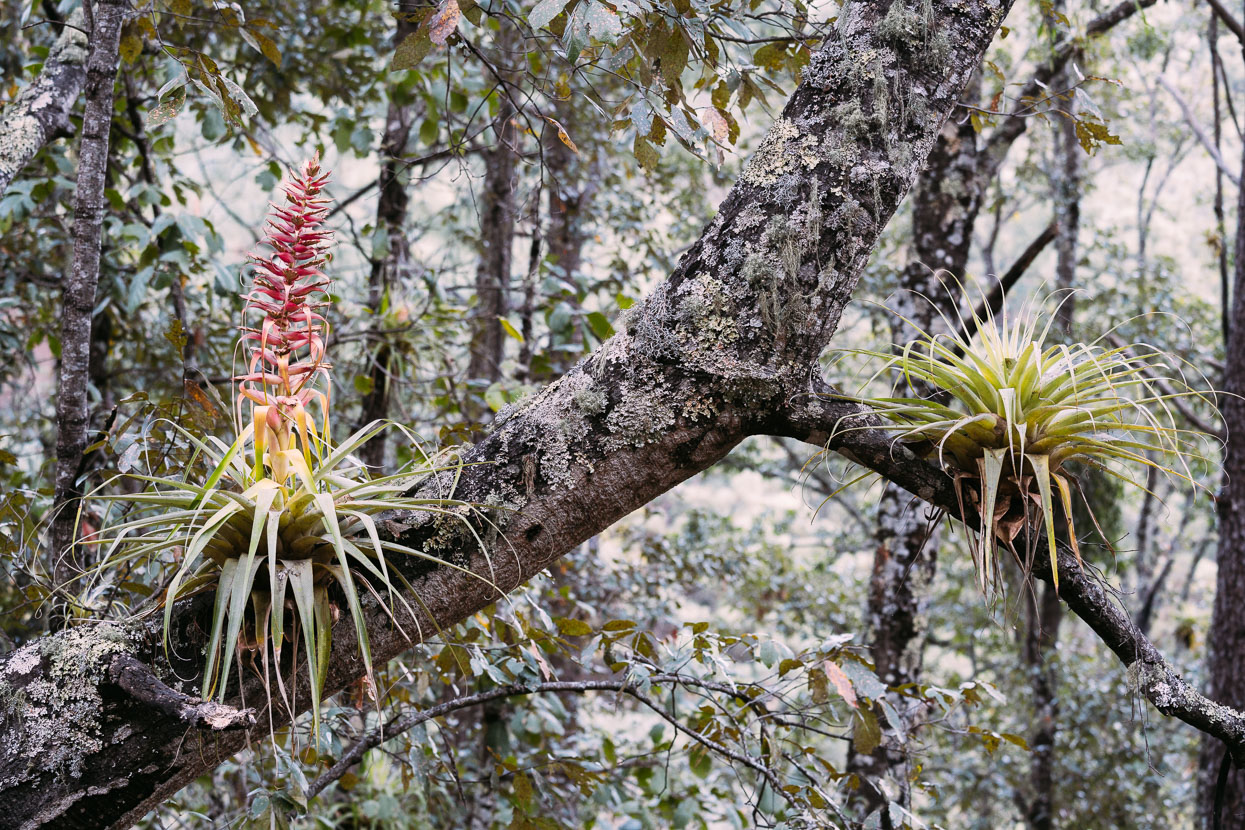
Epiphyte and lichen draped forest high on the range.
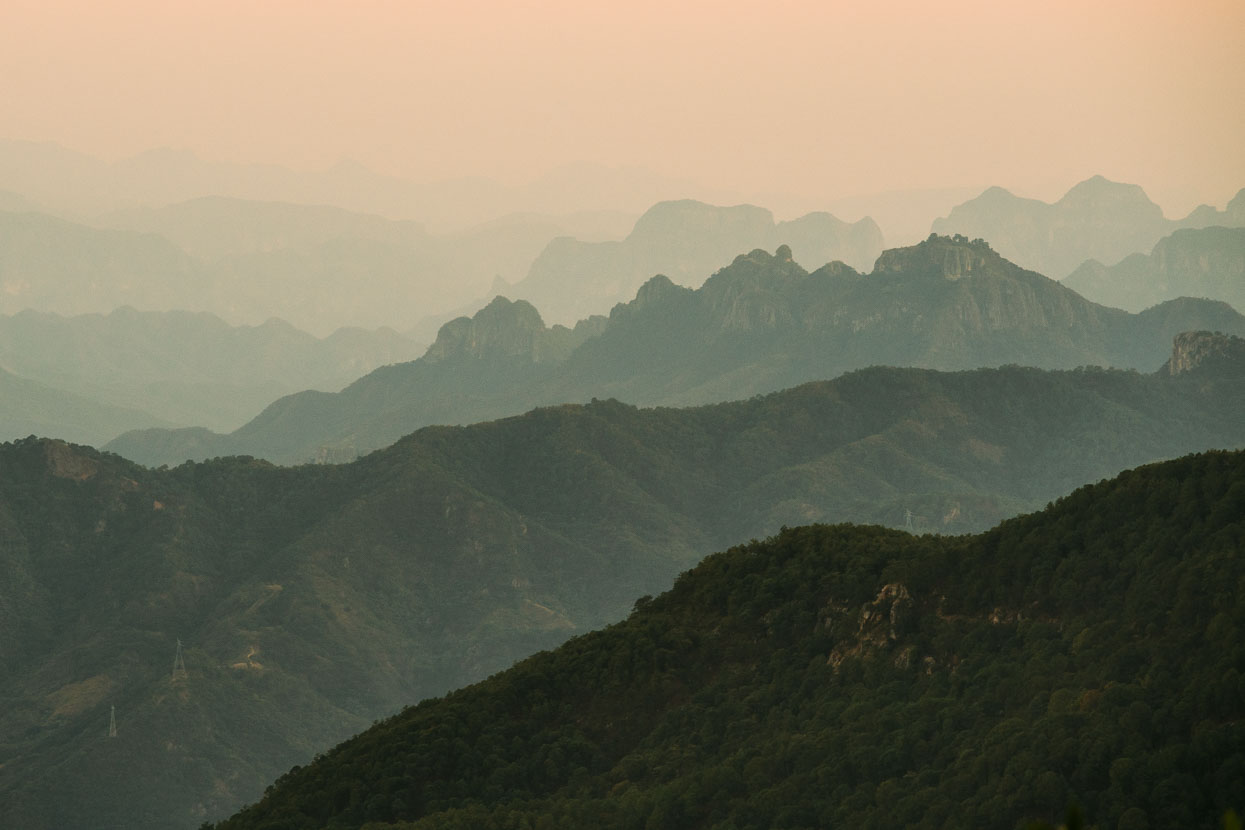
Deep into the Sierra Madre.
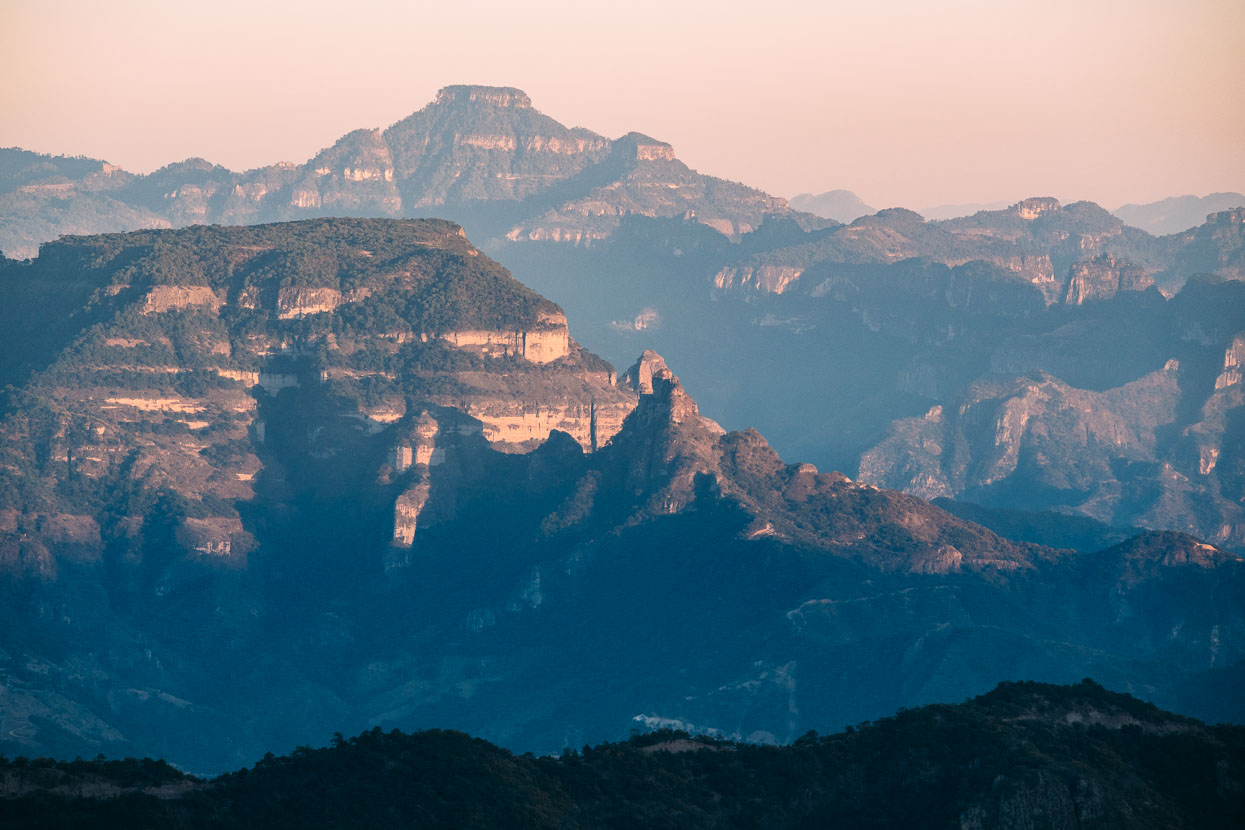
We reached the tiny village of El Palmito late in the afternoon and made the tactical error of deciding to continue past there and camp (the village does have a hotel). Only a few kilometres after leaving the village the most precipitous section of the road began and we had a very tough time finding a place to put the tent, riding into the gathering dark until we found a gully big enough to have a spot for the tent, right by the road, but out of sight.
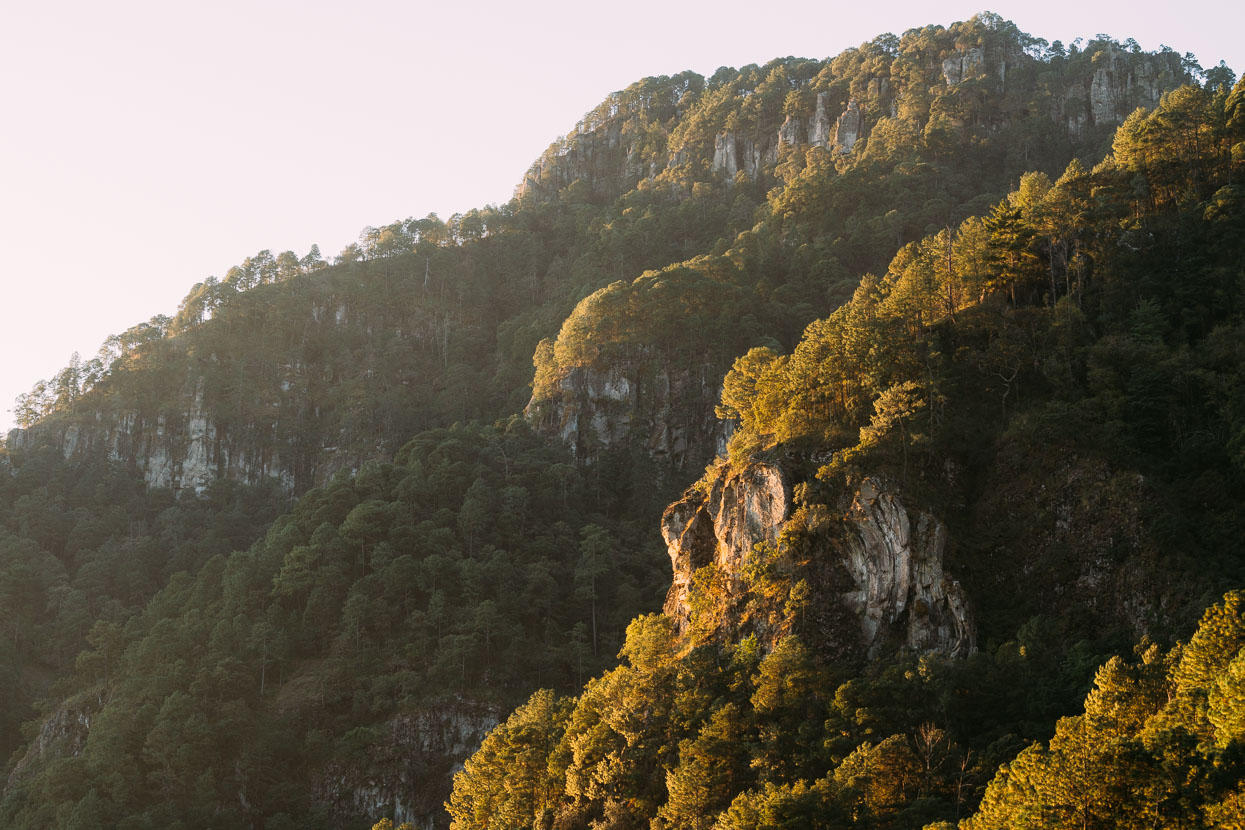
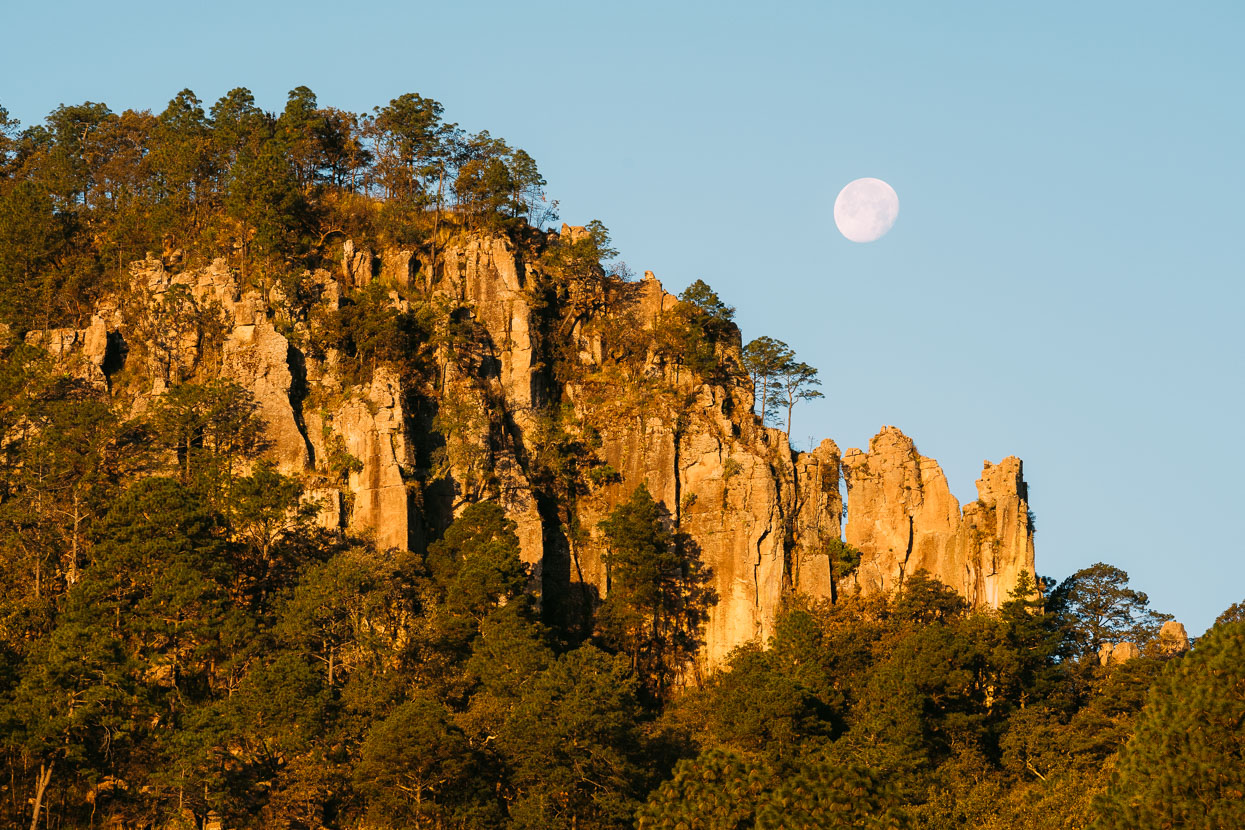
Nice mountain light greeted us in the morning as we pushed on along the road for another 2000 metres of climbing to reach Mexiquillo. Overall, the Espinazo del Diablo was one of the best paved mountain roads we have ever ridden: incredible scenery, very little traffic (like one car per hour!) and a good quality road surface. It’s never steep – just relentless, and the heat of the lower elevation sections make it extra hard work for the first day or two.
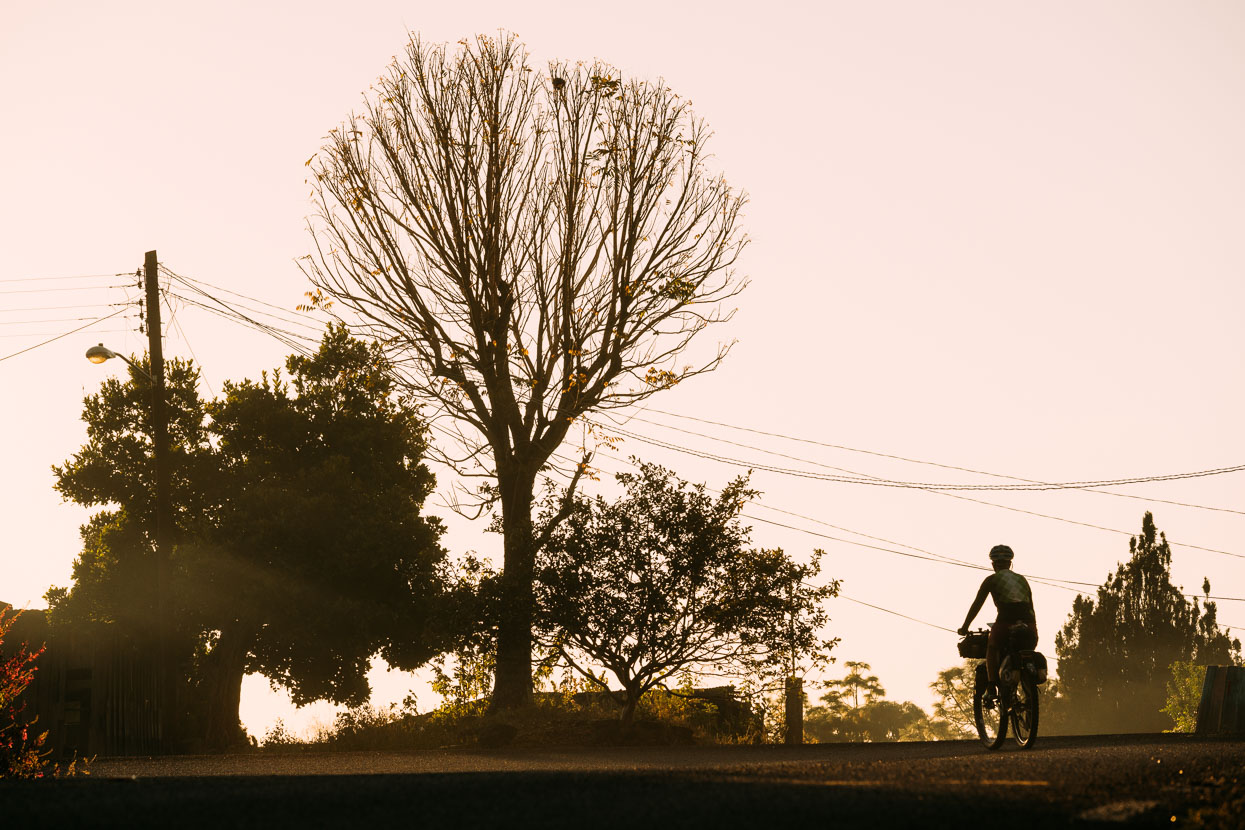
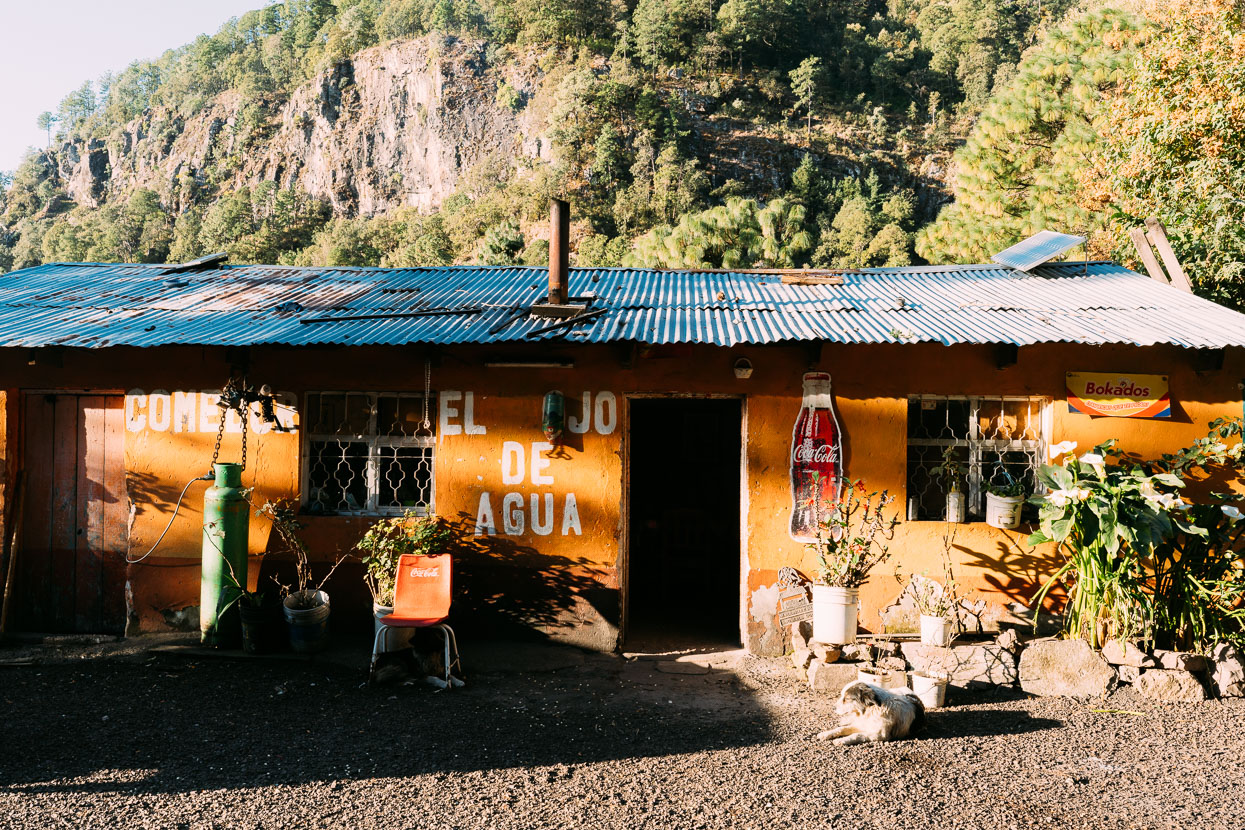
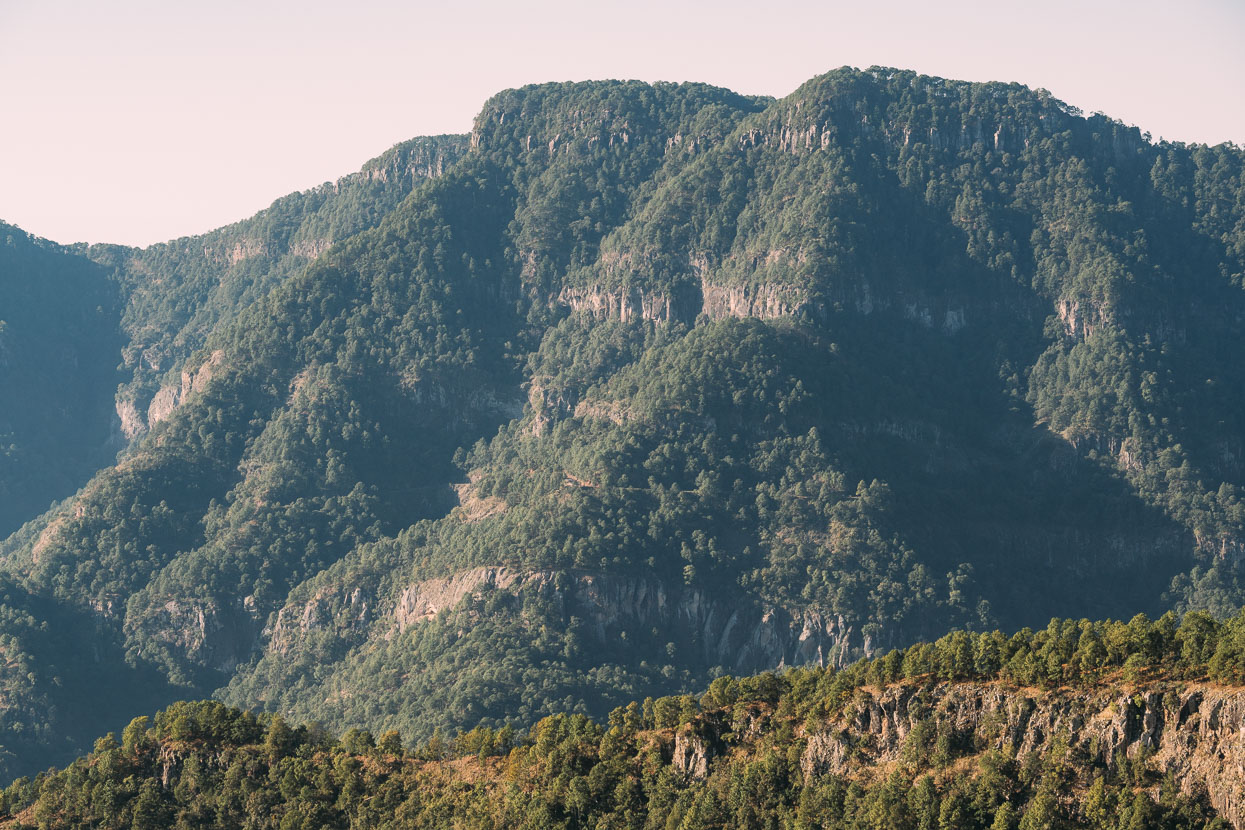
Looking back at where we’d ridden from in the morning – there is road over on that mountainside somewhere!
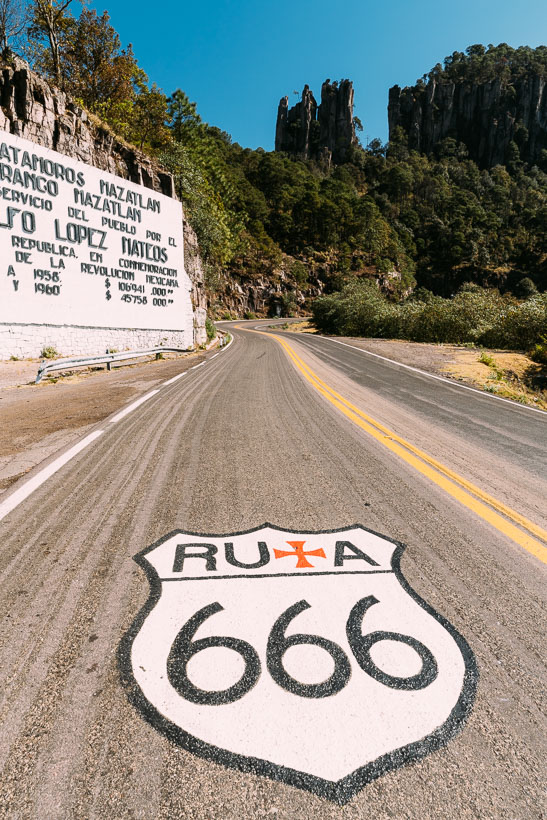
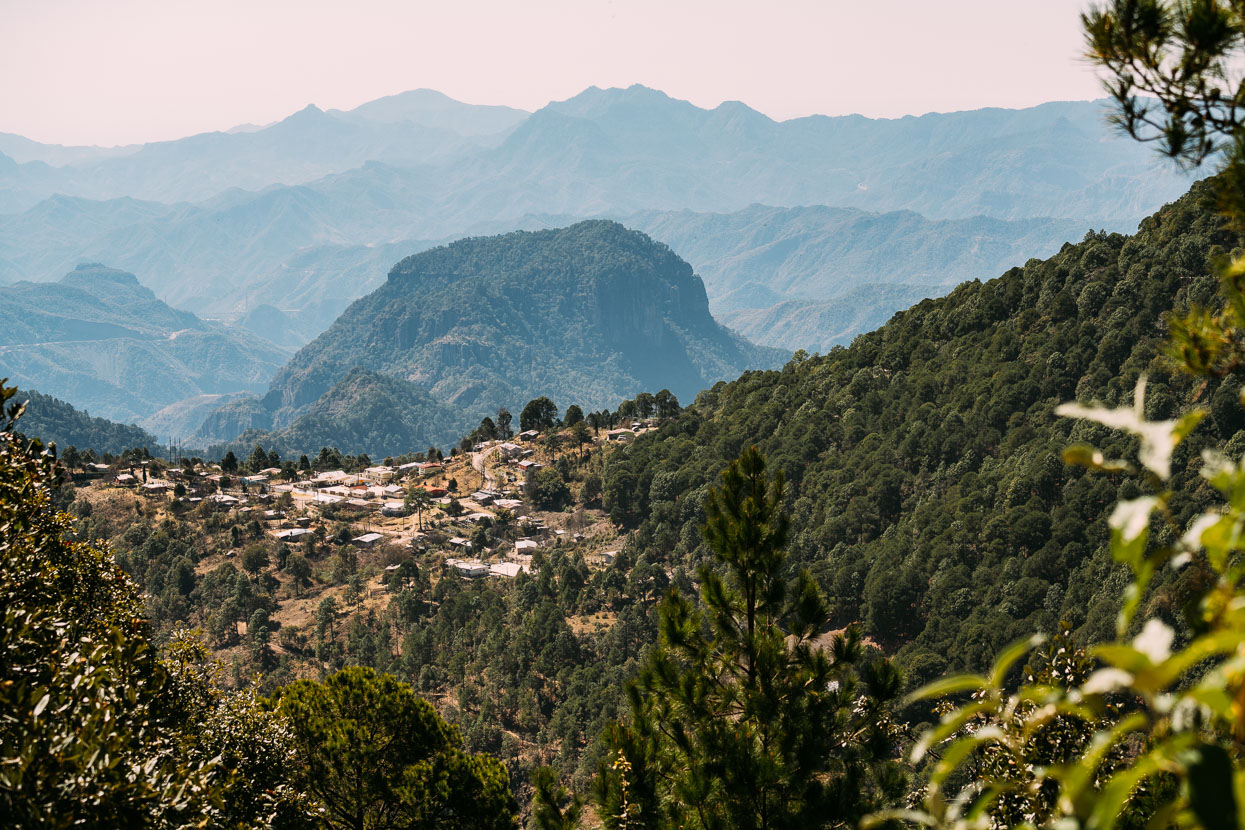
Sometimes we saw people waiting on the edge of the road for a bus to the closest large town, having walked or ridden mules up from their villages down in the valleys.
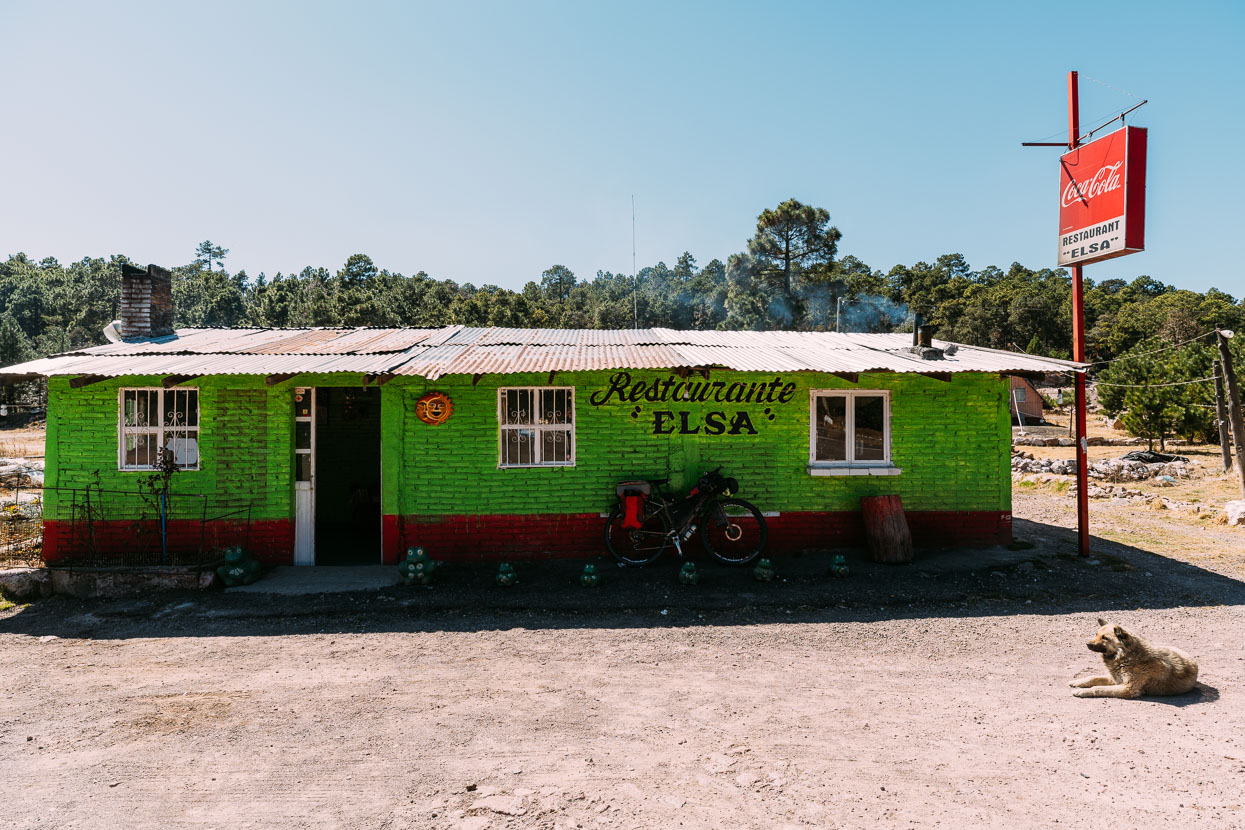
Finally at around 2600m we broke out of the canyon-edge riding and onto the mesa-like top of the range. A cold wind blew. We stopped at a tiny cafe and ate quesadillas with fried eggs out of the wind before chatting with the bored soldiers at a military checkpoint and pushing on through the pine forest towards La Ciudad.
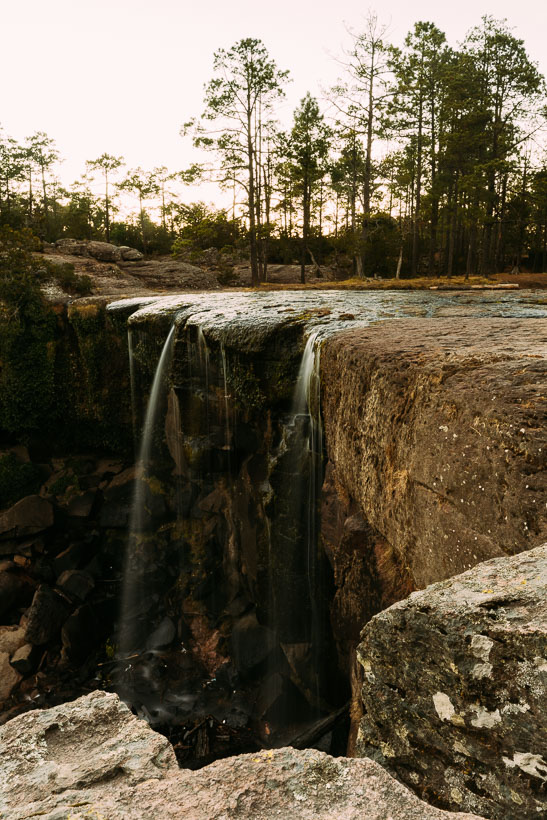
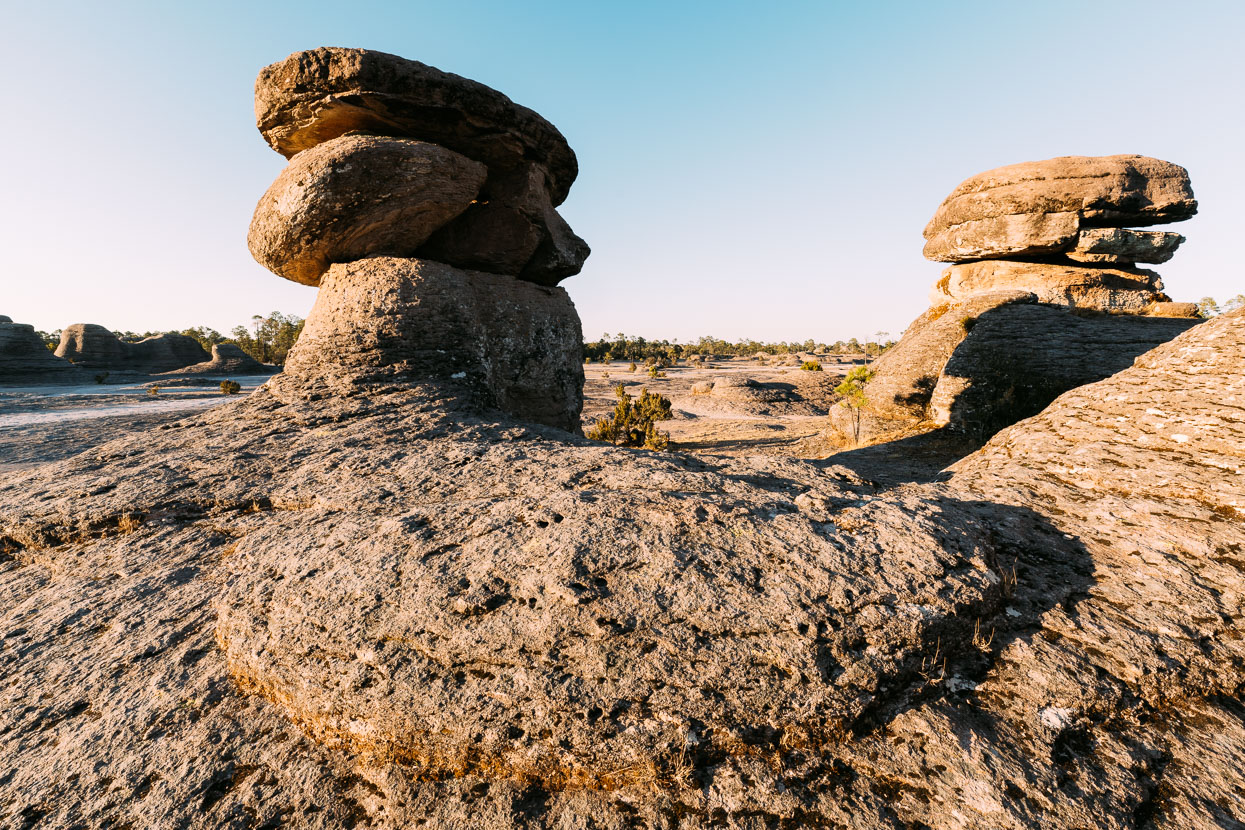
A not particularly welcoming logging town, La Cuidad is the gateway to Mexiquillo, one of several small forest parks along the route to Durango. We paid a small fee to enter the park and rode just a couple of kilometres from town overall to camp near a waterfall. The park fee also gets you wifi access inside their tiny cafe and a hot shower – if there is someone around to light the fire under the boiler.
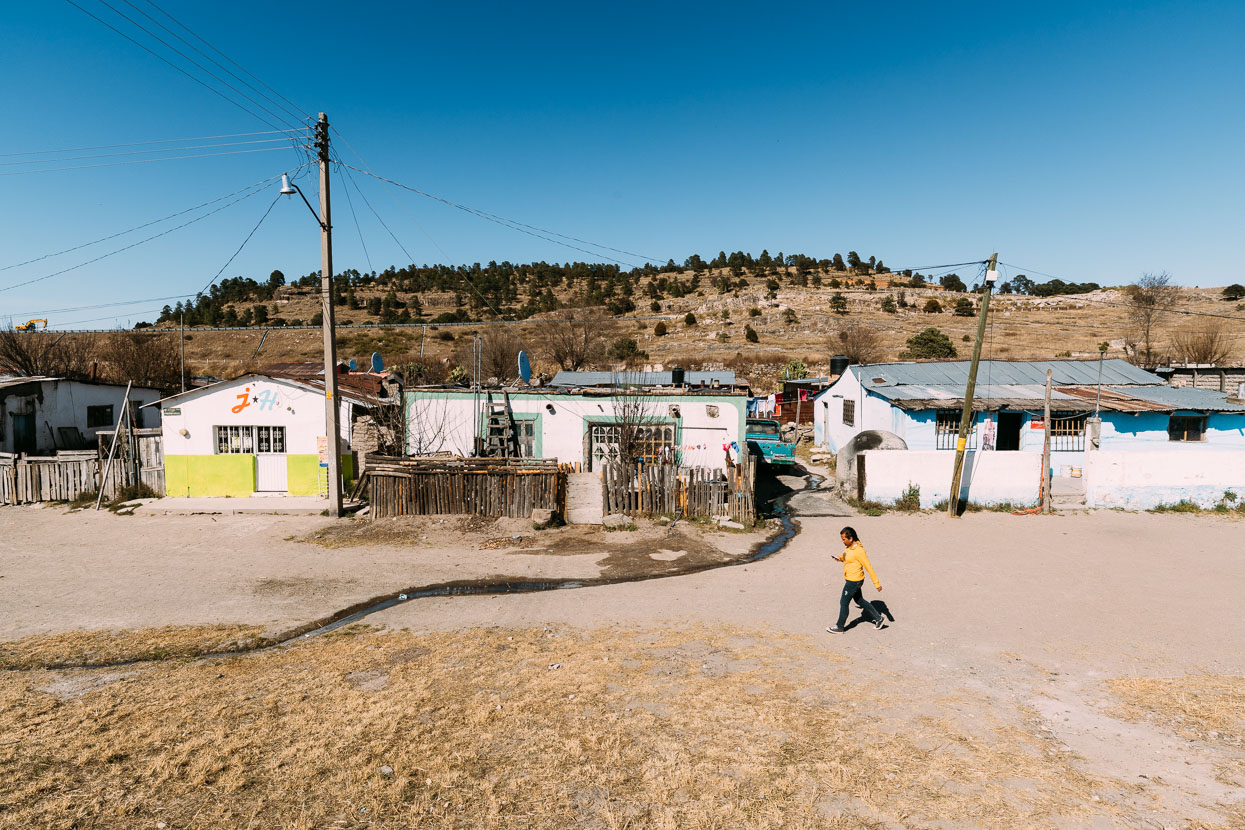
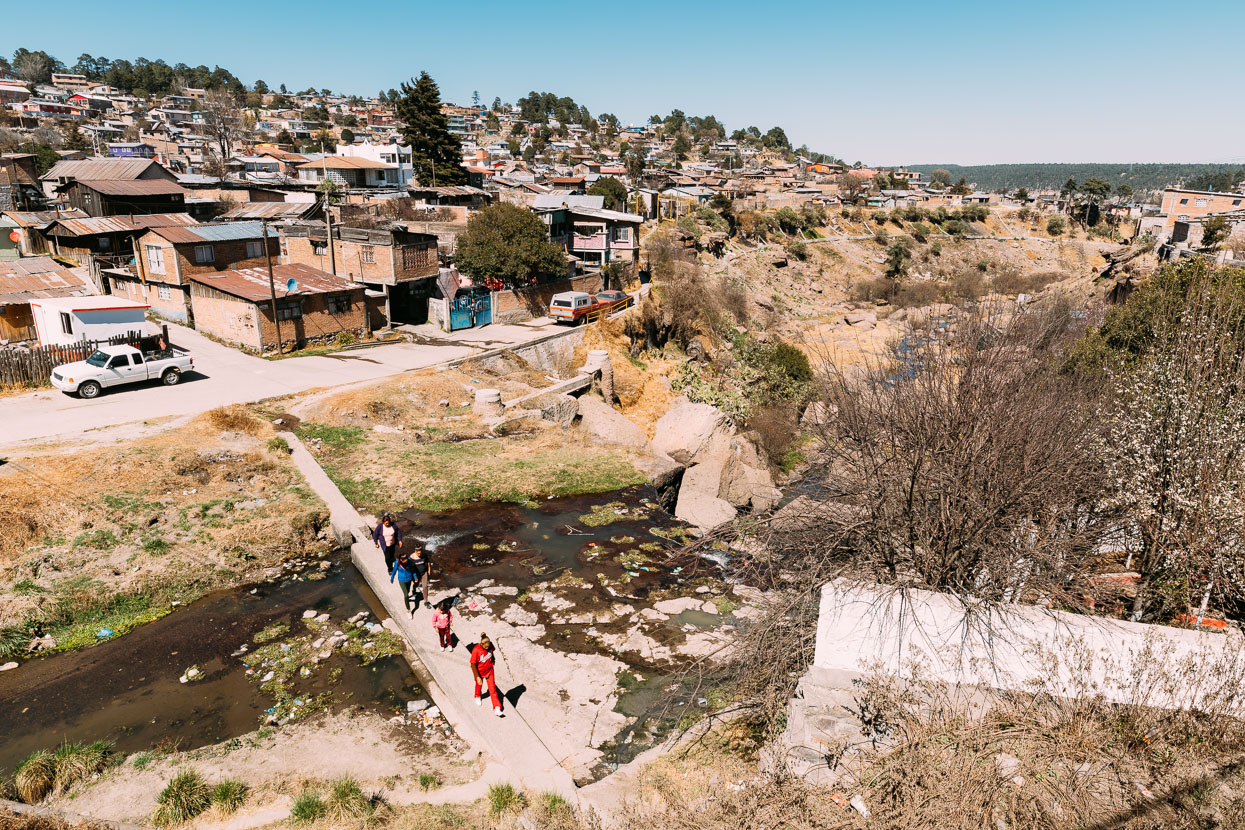
The next day we passed through El Salto and a series of smaller villages – all supported by logging (sadly), and all curiously lacking in charm – the cold wind and dust might have had something to do with it, but the people too seemed to be missing the friendliness that we have encountered elsewhere in Mexico.
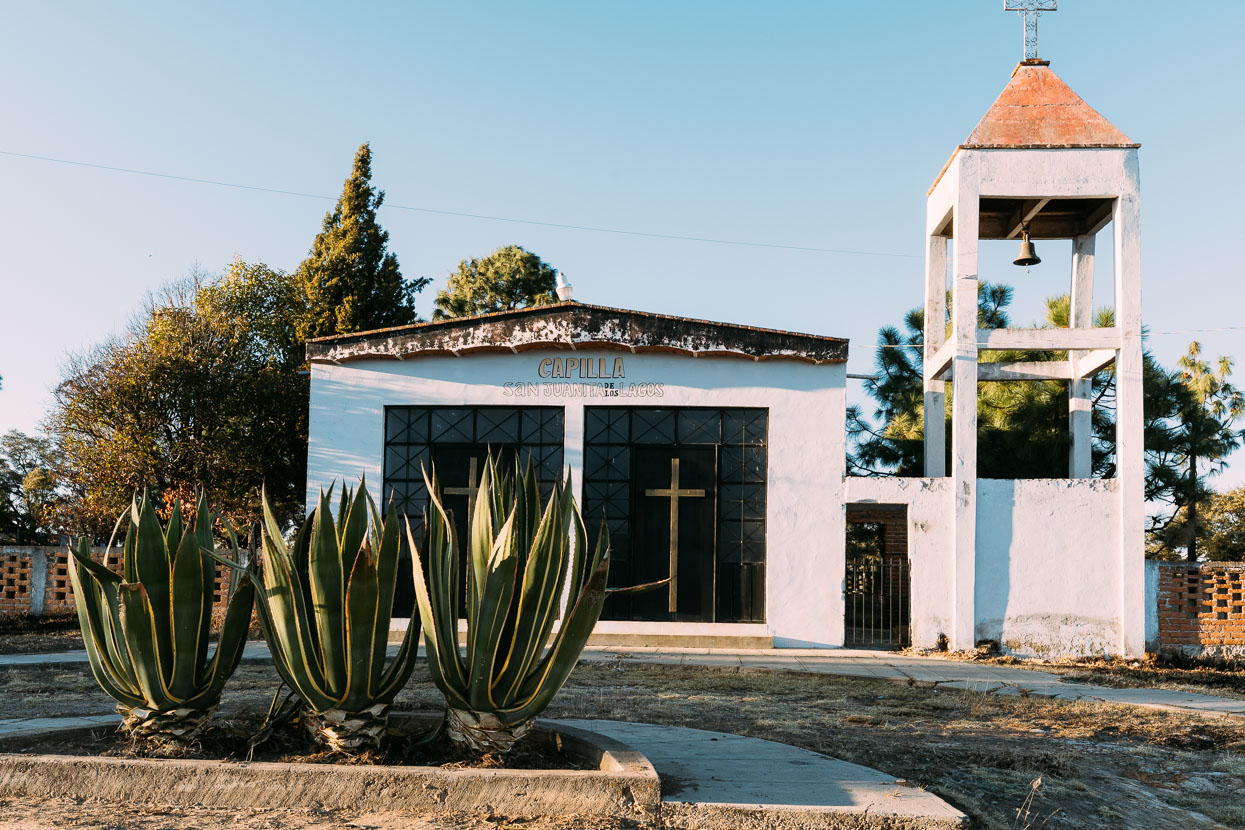
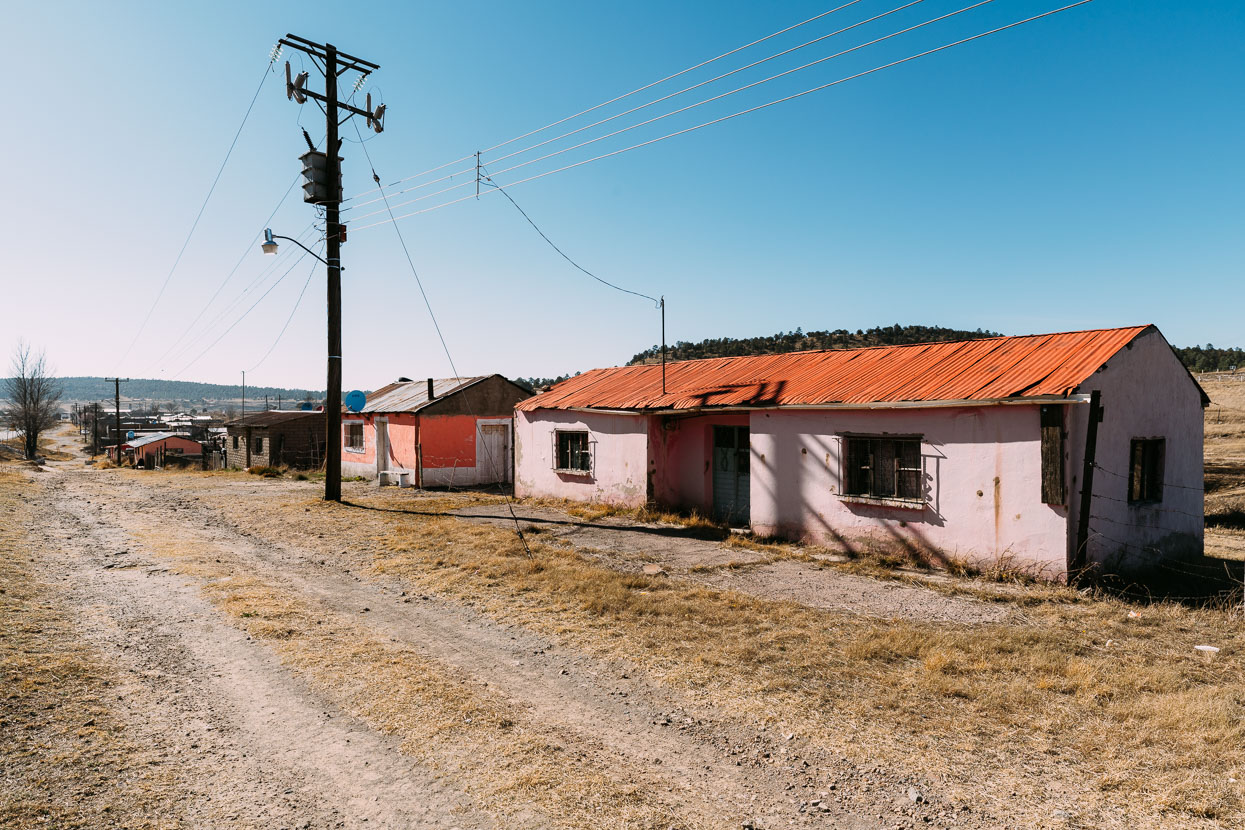
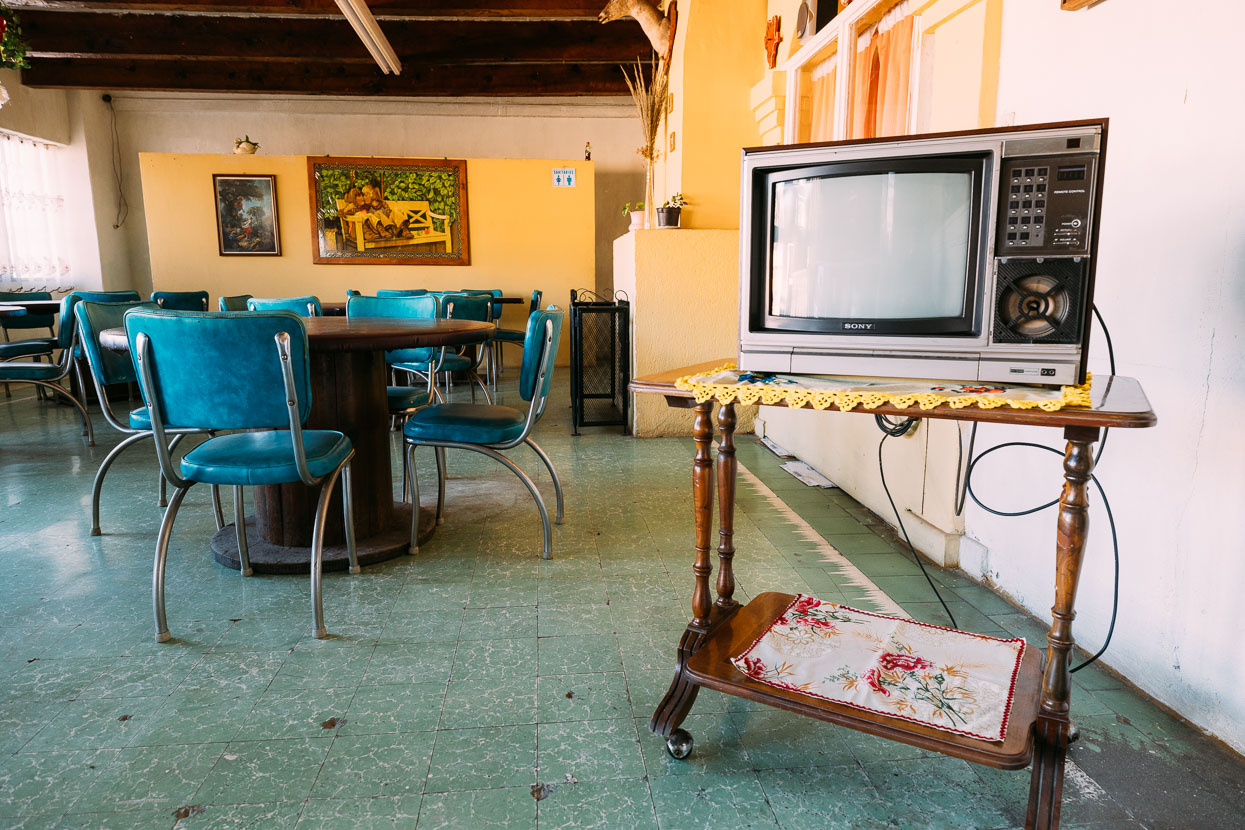
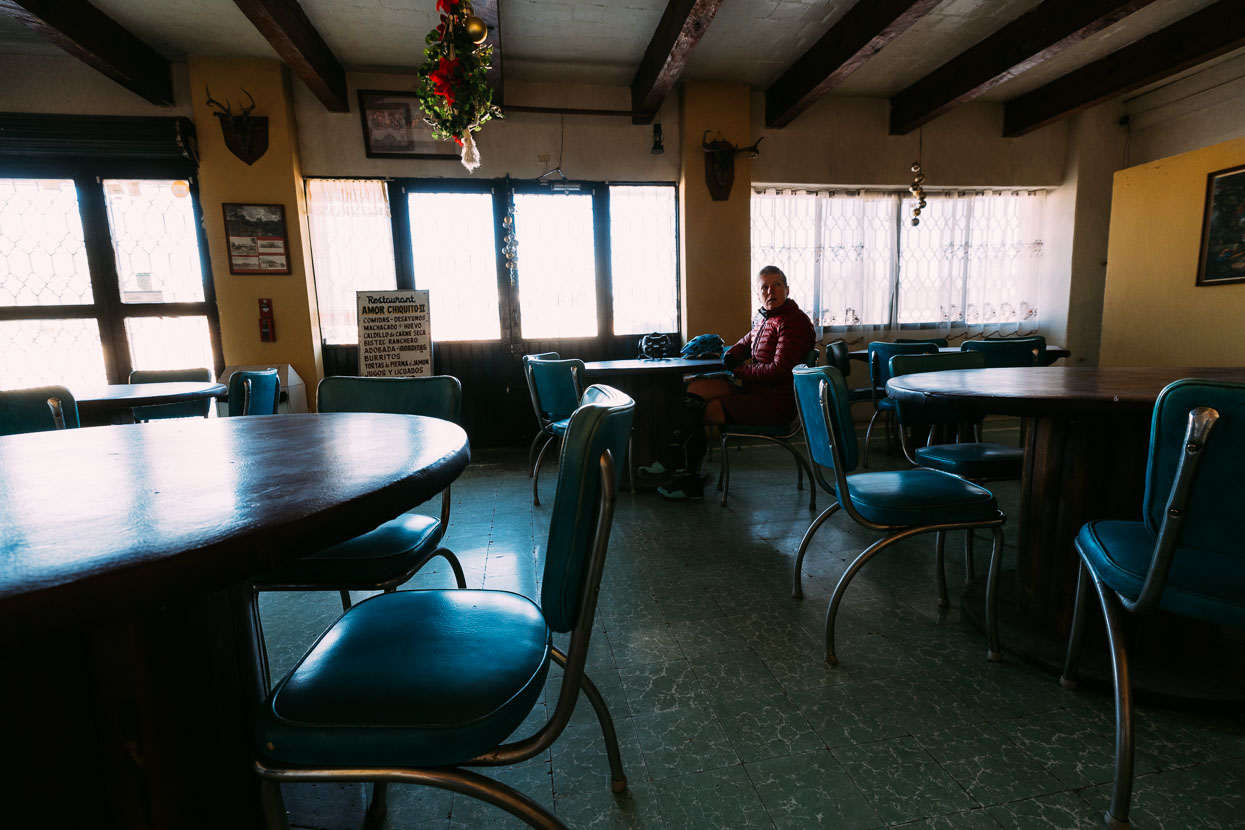
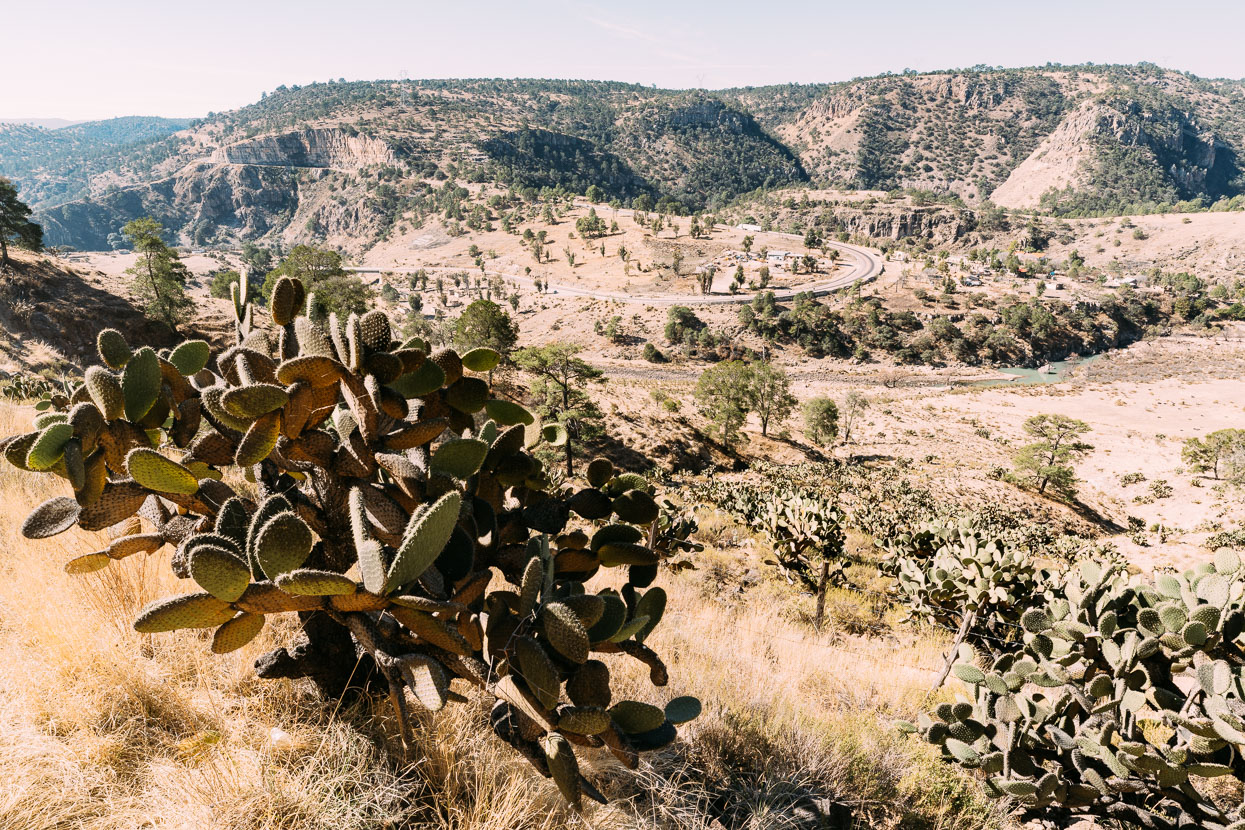
As we drew closer to Durango the landscape changed again: from pine forest to open grasslands, cactus and agave. Desert-like once again.
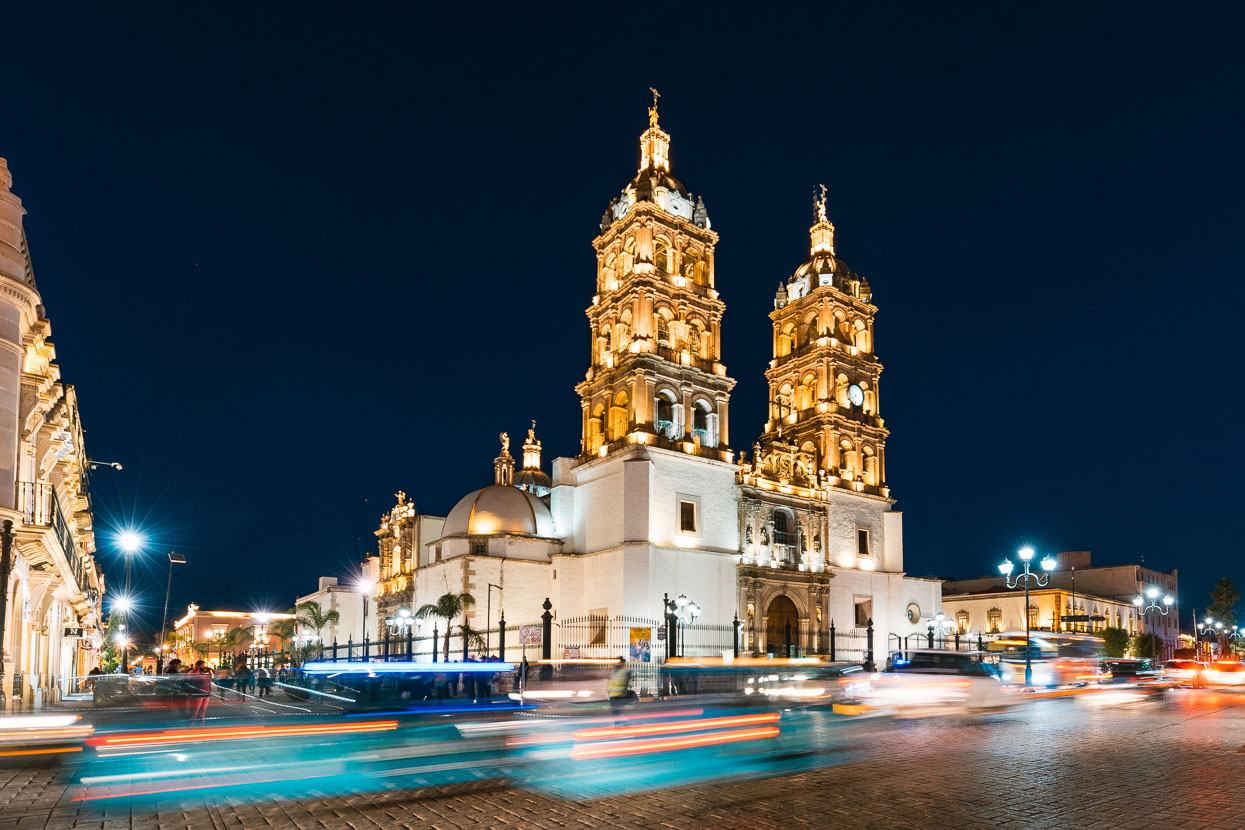
A classy colonial city with a blue collar mining history, Durango had a charm and energy to it that we really liked. After dark, colourful lights bring the city’s diverse architecture to life and after the cultural void of the Baja it was great to be in the centre of one of Mexico’s famous cities.
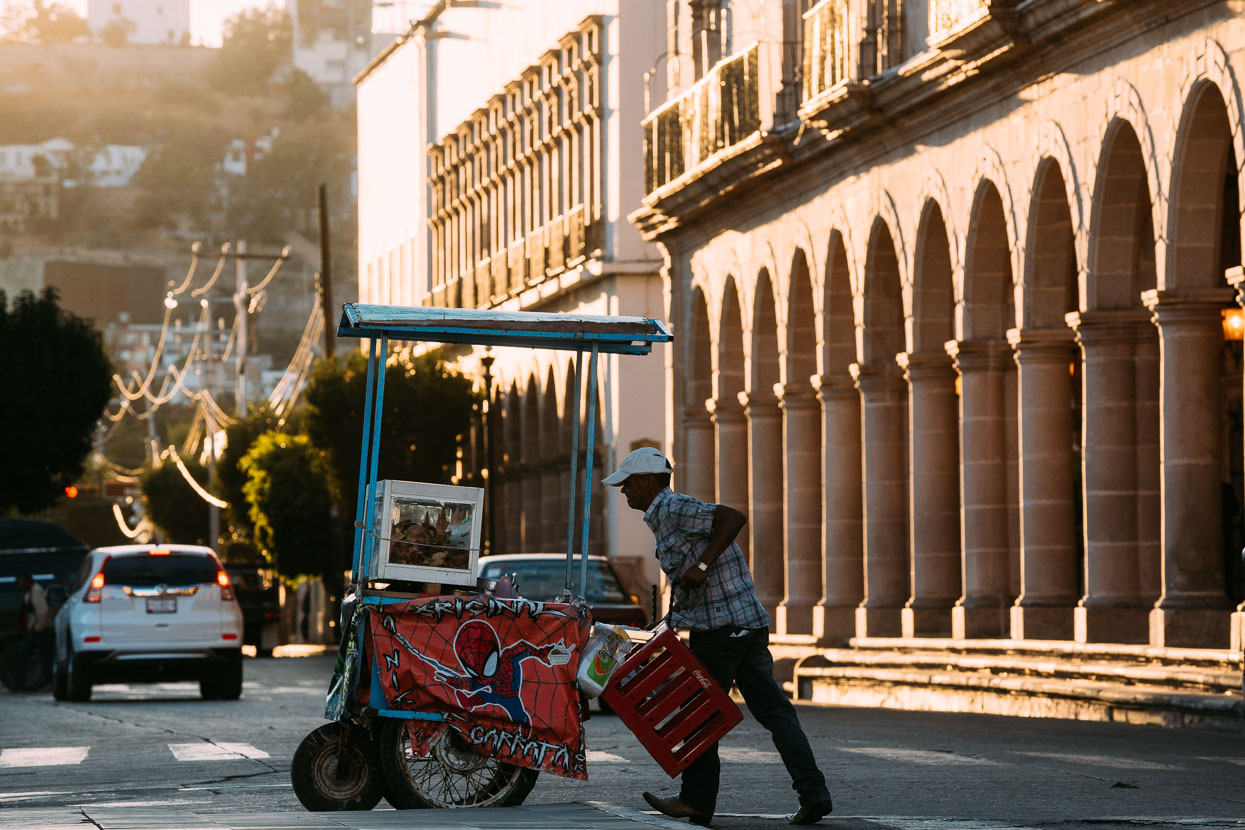
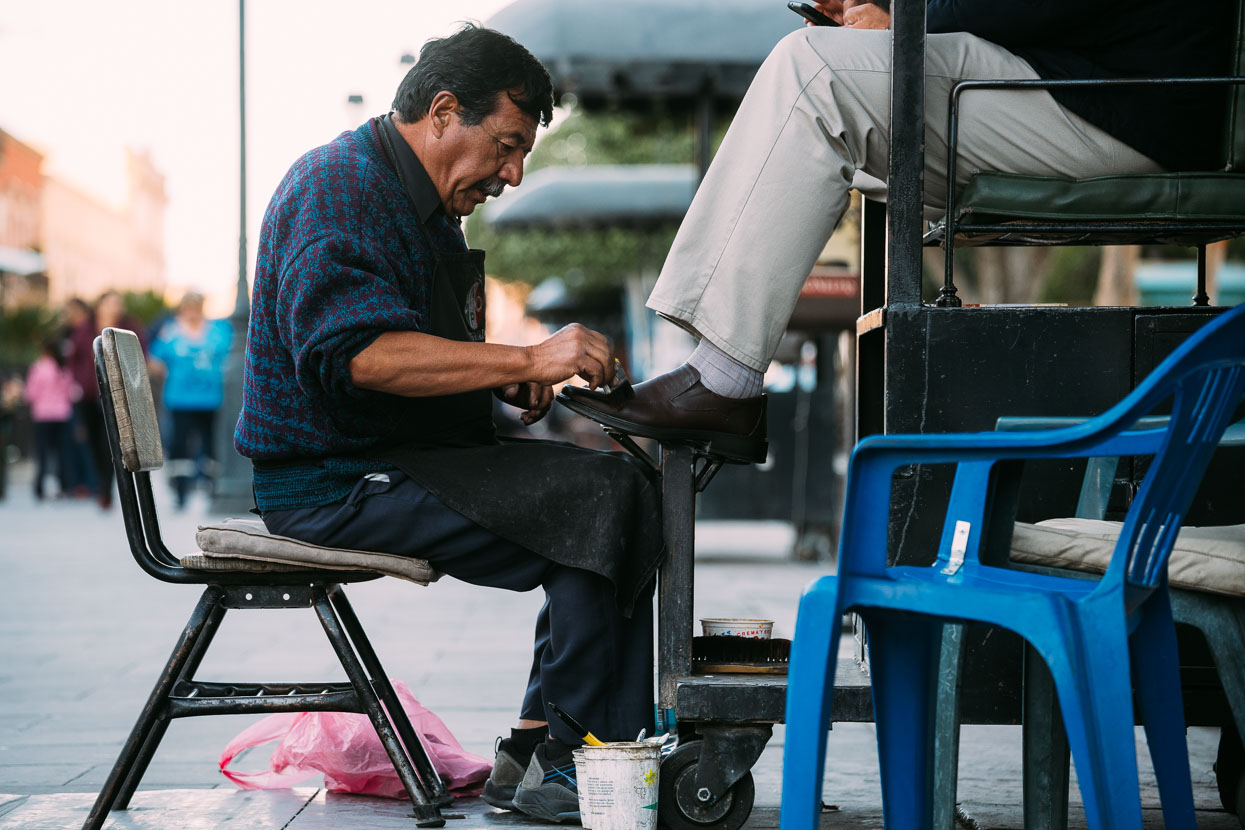
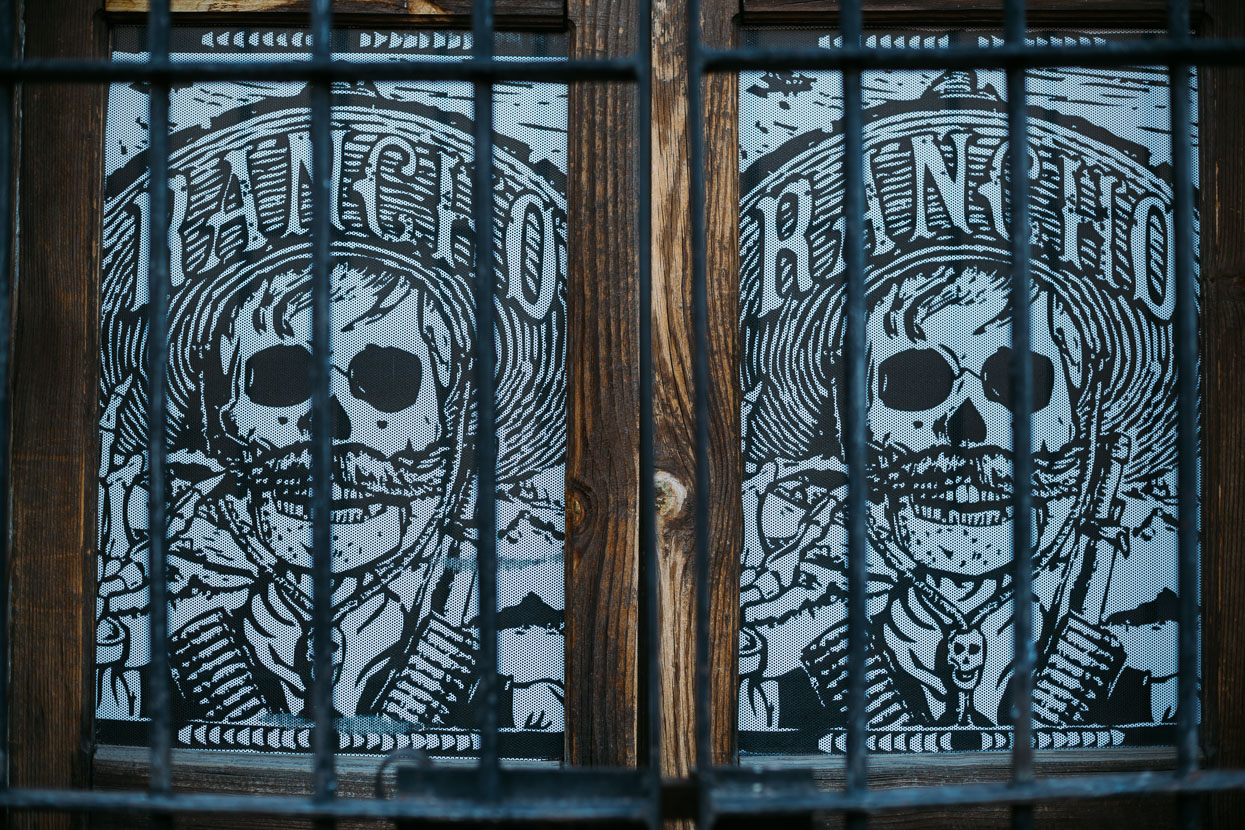
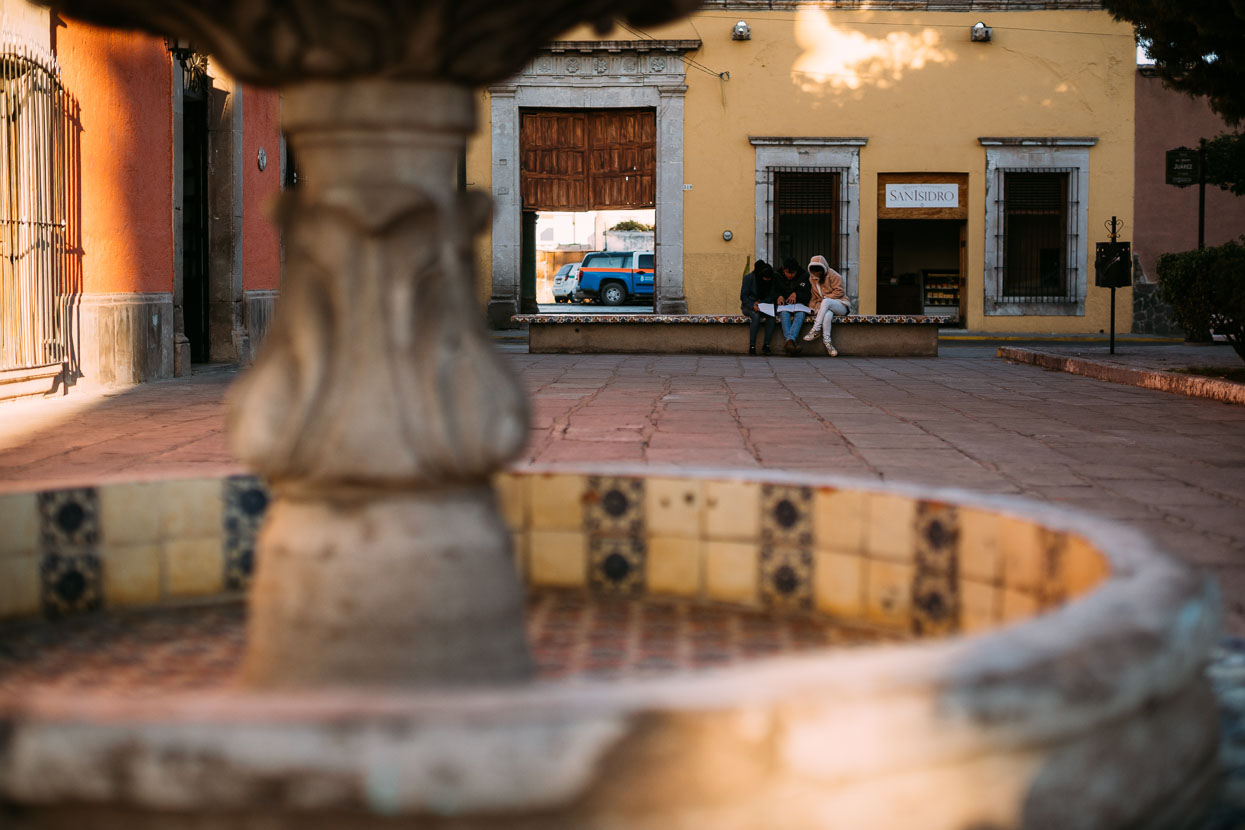
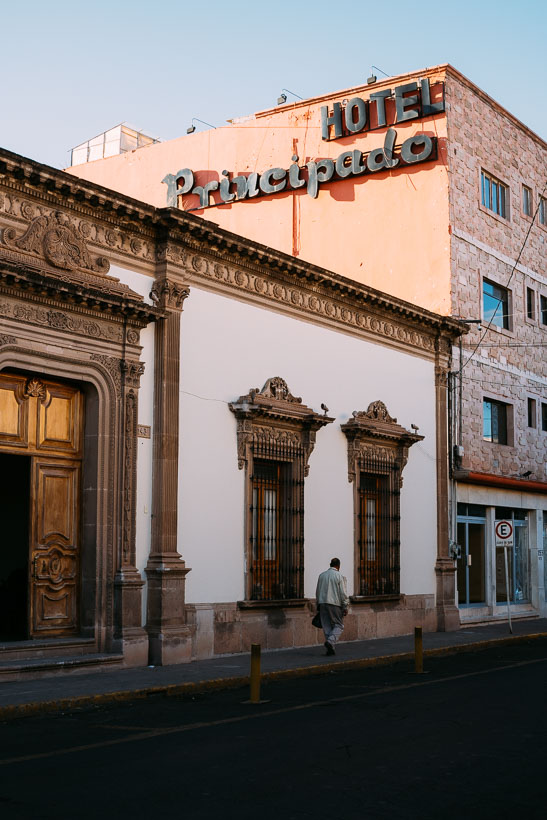
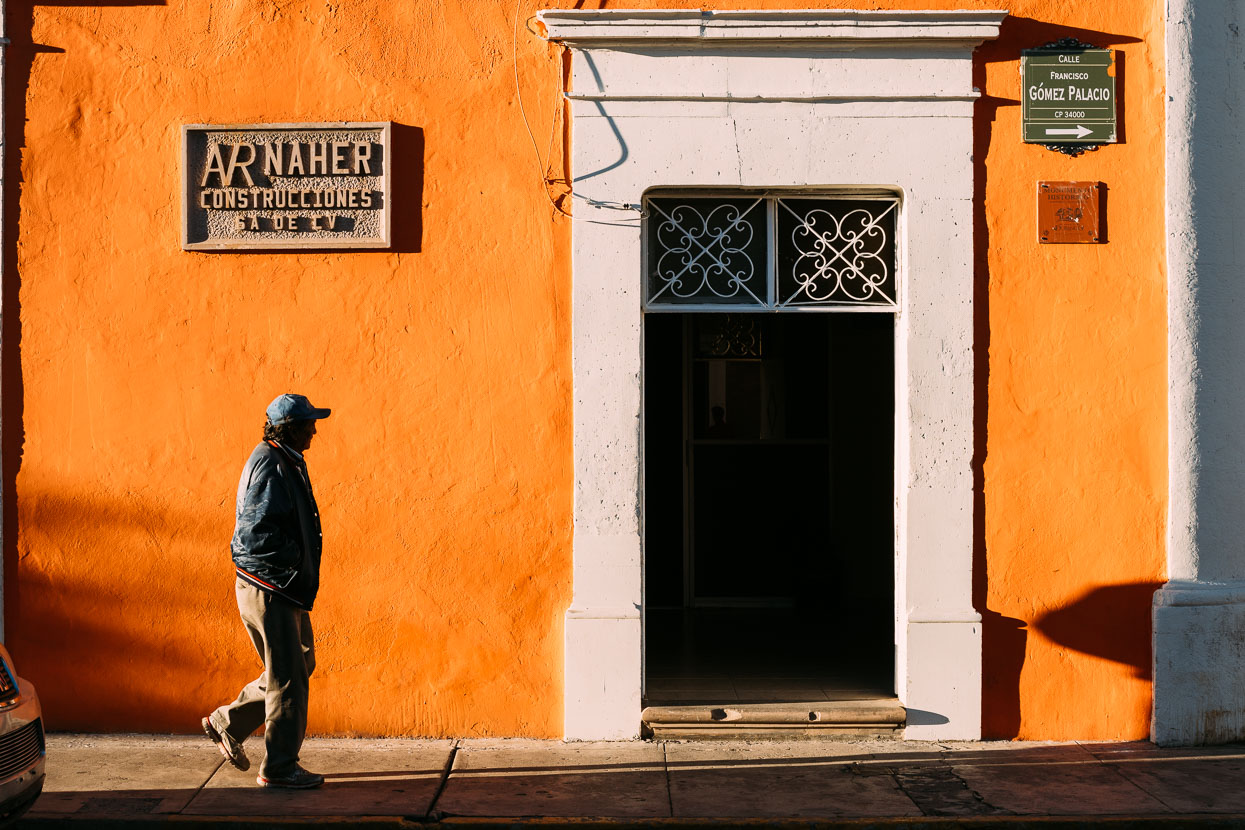
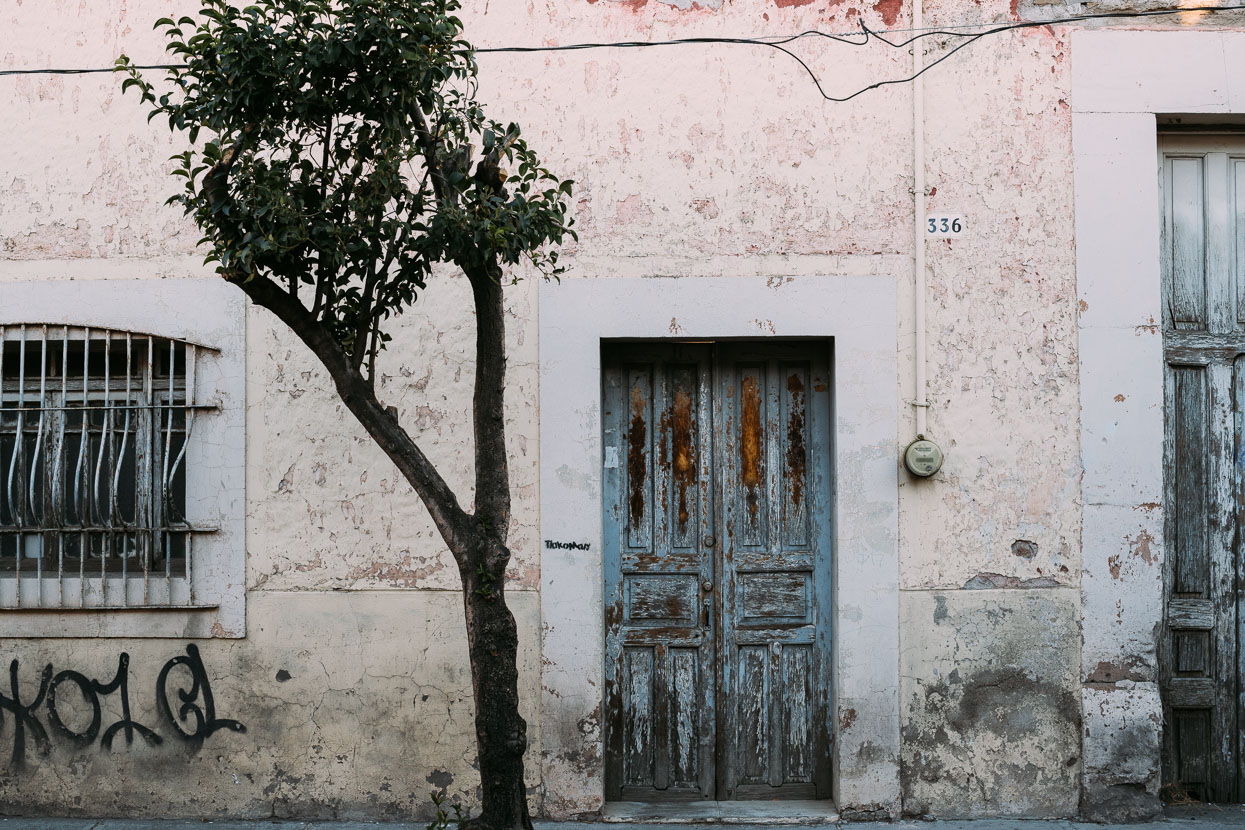
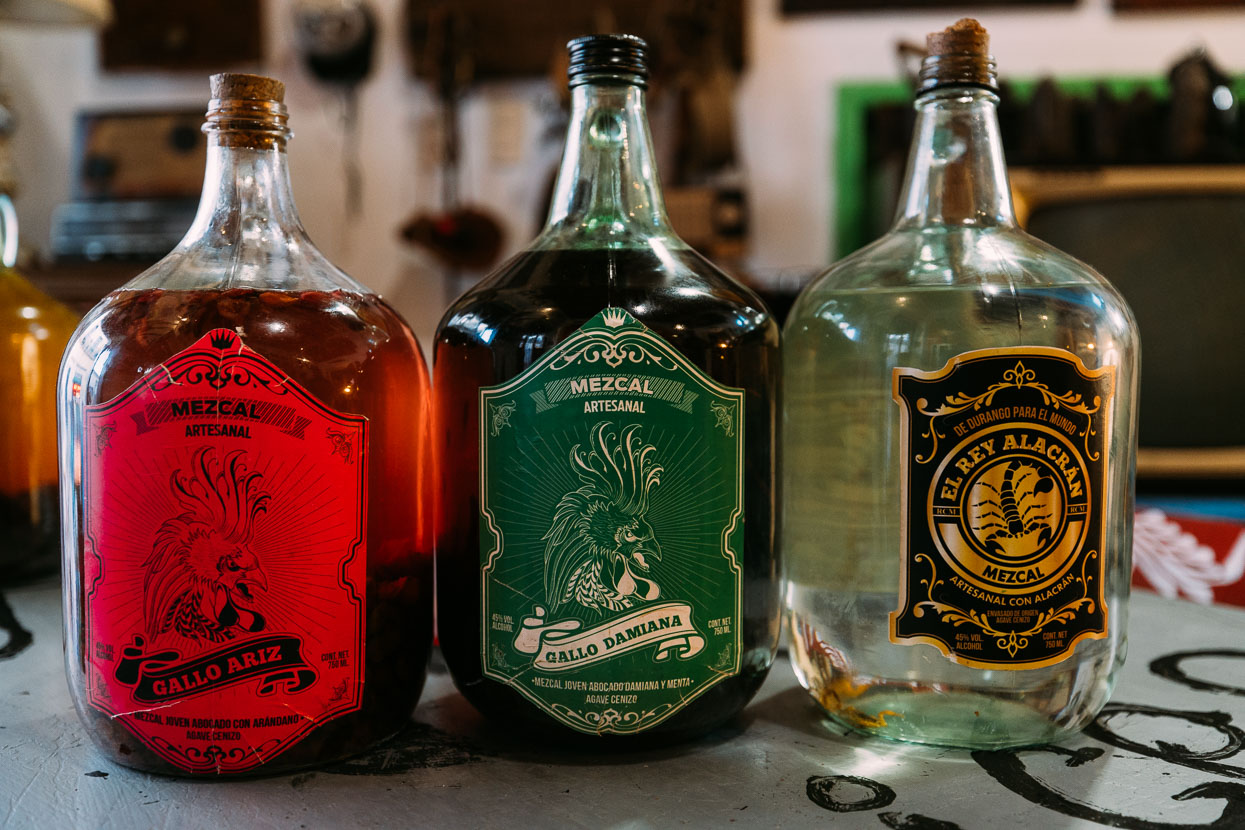
We were keen to try some local mezcal which is a spirit distilled from agave bulbs – the same as tequila. Technically, all tequila is mezcal, but for it to be called tequila is can only be made in the state of Jalisco. The particular bar we chose (quite randomly) ‘flavours’ one of its varieties with scorpions. We must have shown great interest, because shortly after taking the first sips of our chosen varieties they then showed us a bucket crawling with cringe-inducing live scorpions. Poor buggers.
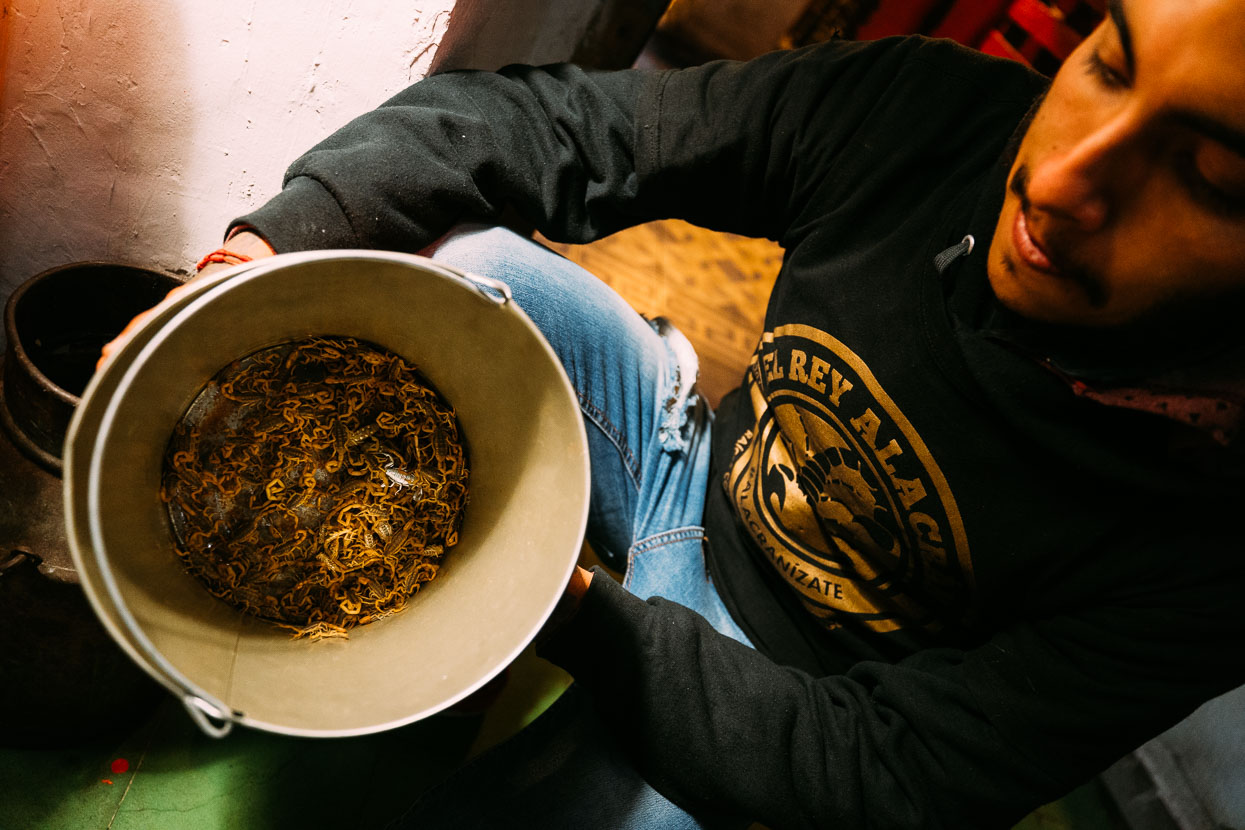
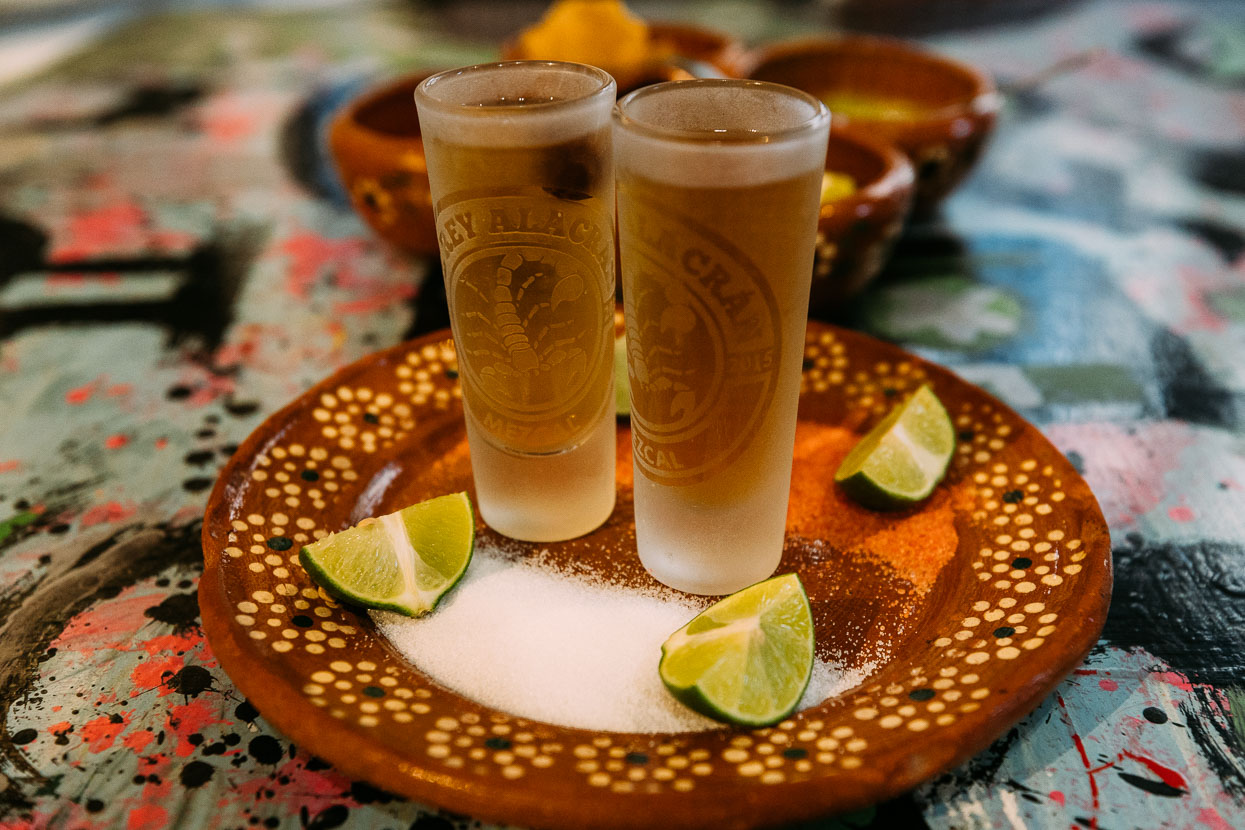
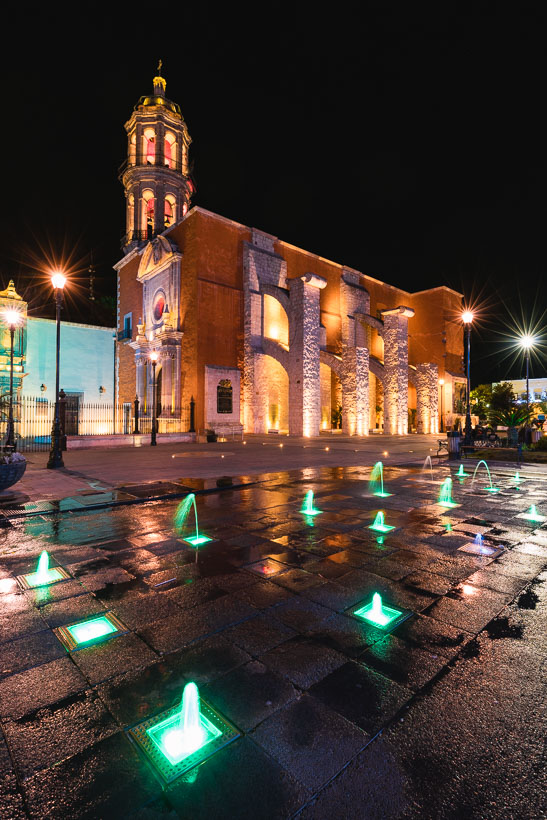
Thanks to Biomaxa, Revelate Designs, Kathmandu and Pureflow for supporting Alaska to Argentina.

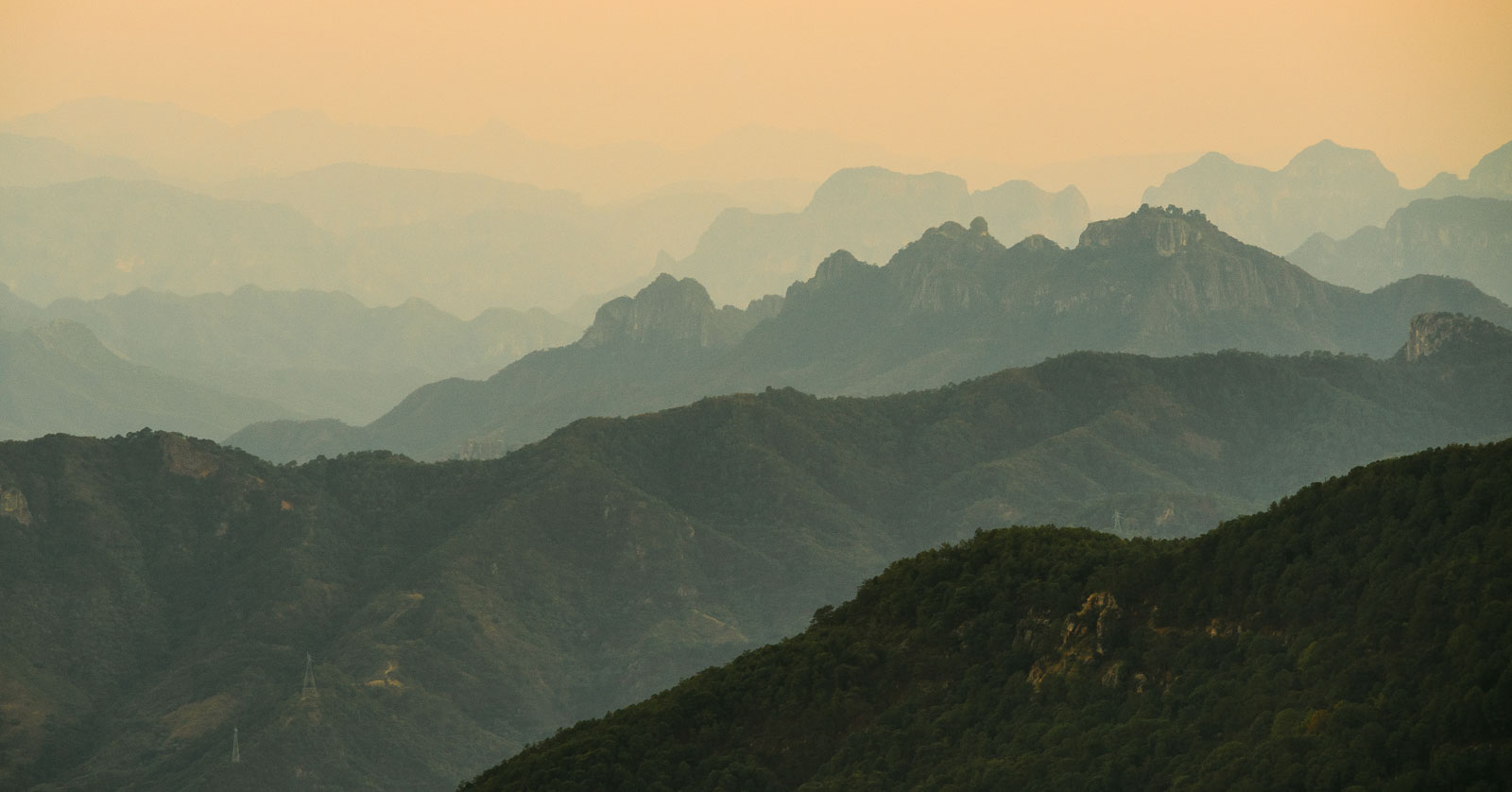







Very nice shots Mark…!!!
Thanks Heike!
Sweet blog Mark. Good to see the trip going well. Kristen
Thanks Kristen!
Live the blog and images.
Mira and I have just started the Tans Mexico Norte.
Thanks for publishing the route.
mira_la_perra
No problem, hope you have a great time!
Lovely pictures and description. I know the work that goes into a touring blog – often the excuse for a day or two off in my case. I hope to be riding in your wheel tracks as soon as conditions permit. 🙂